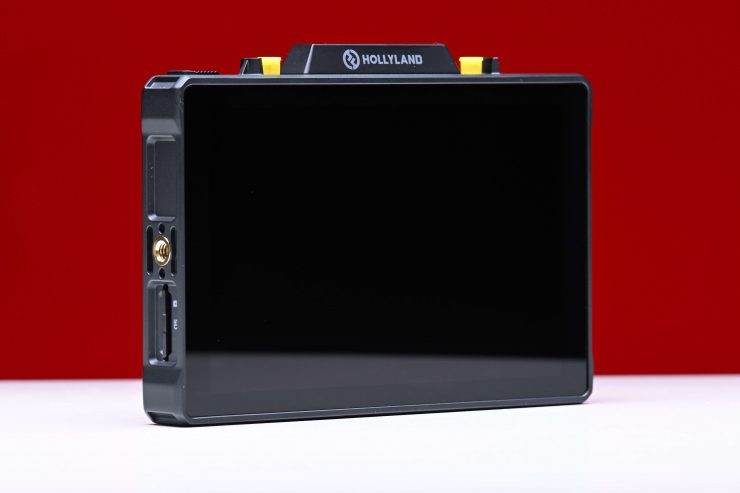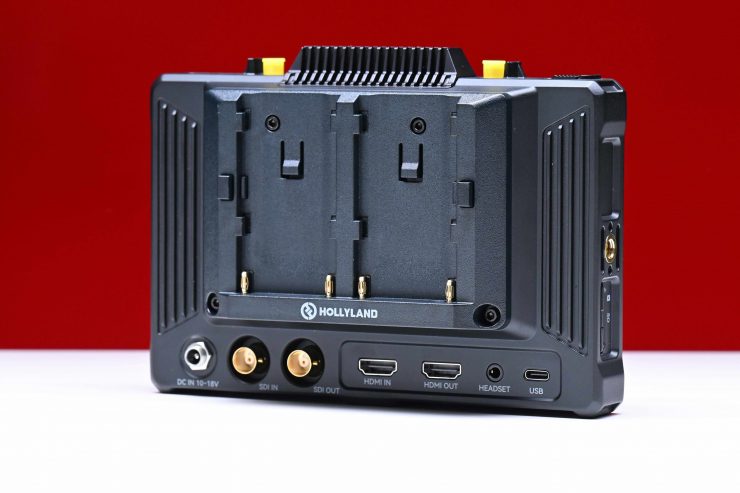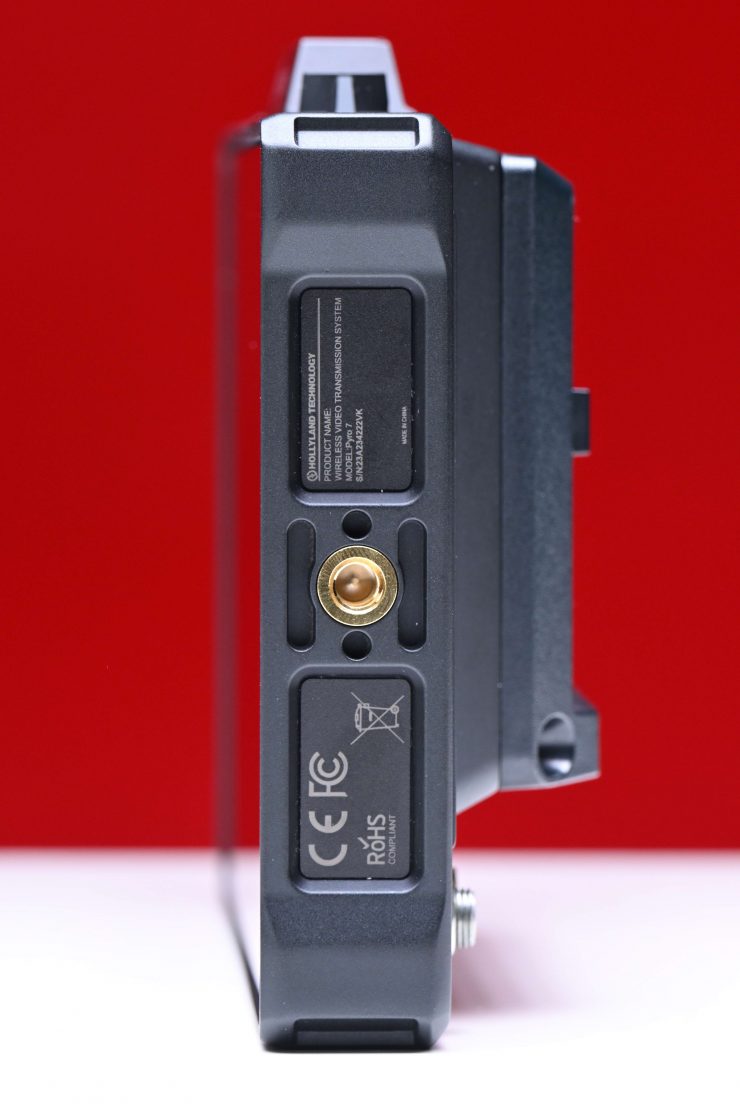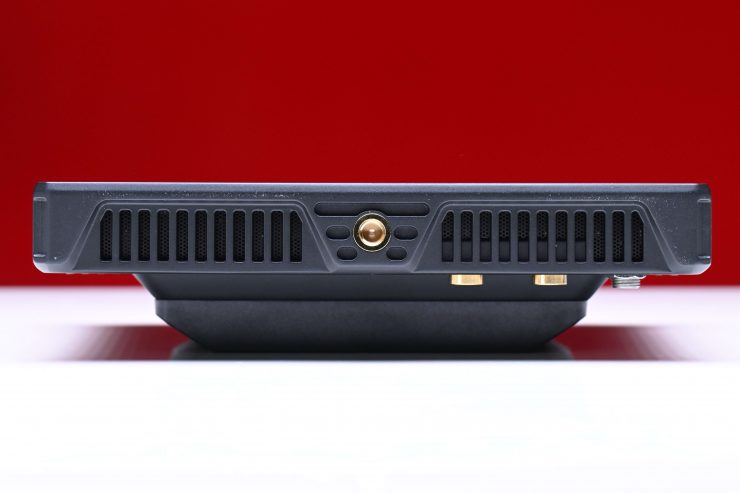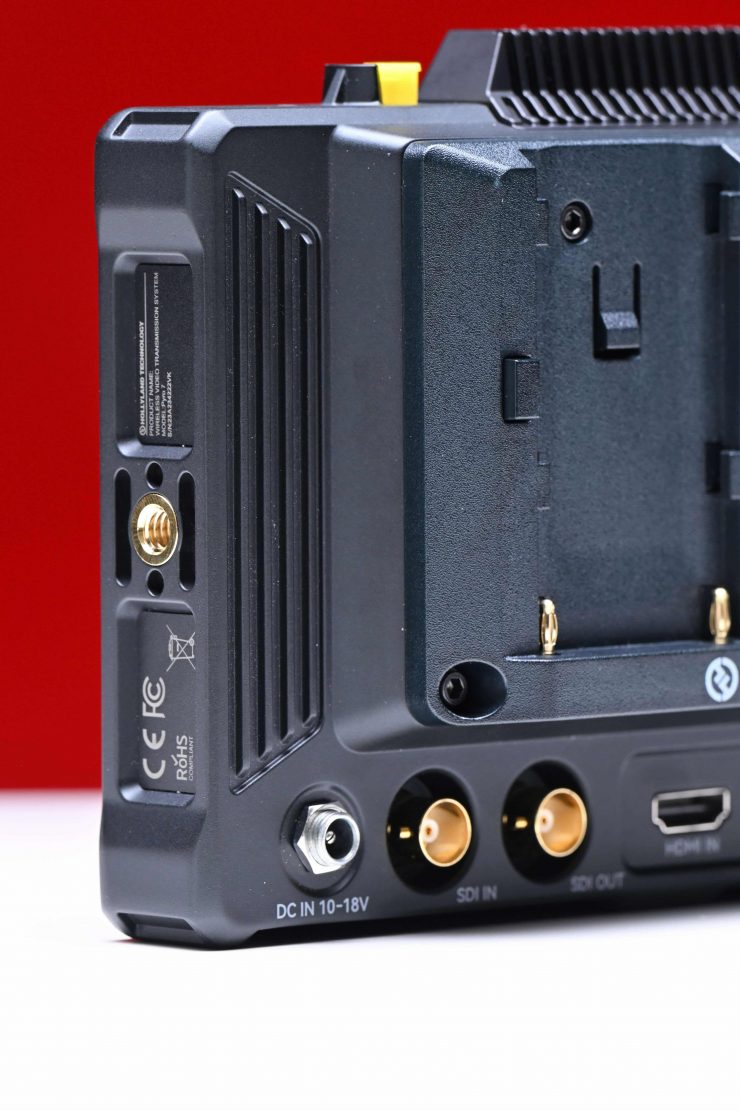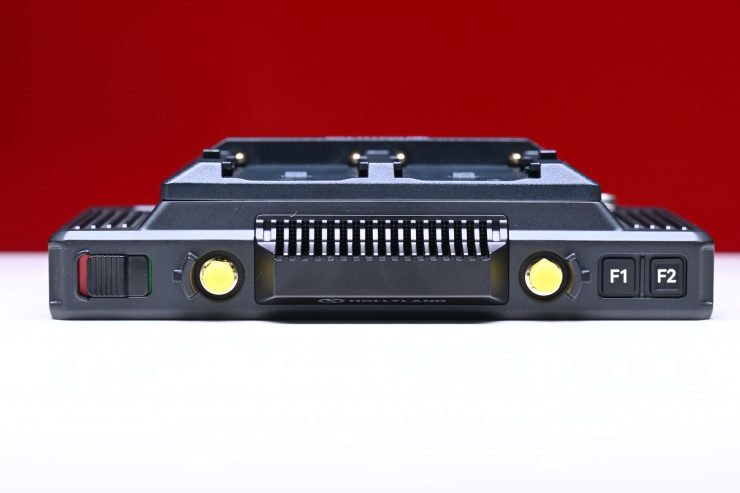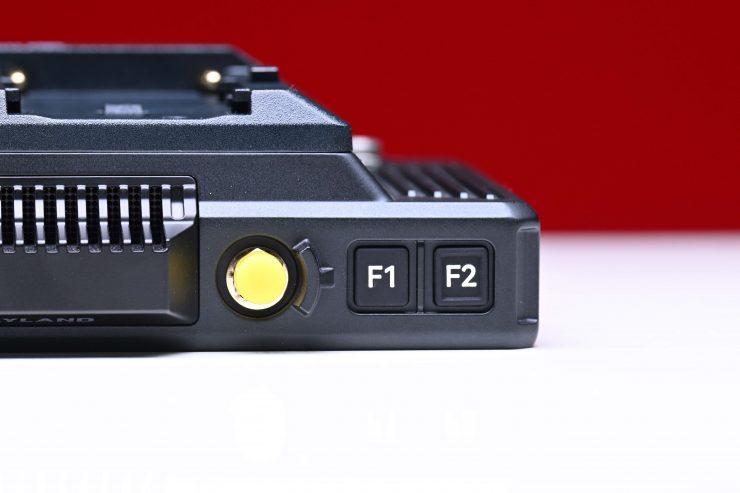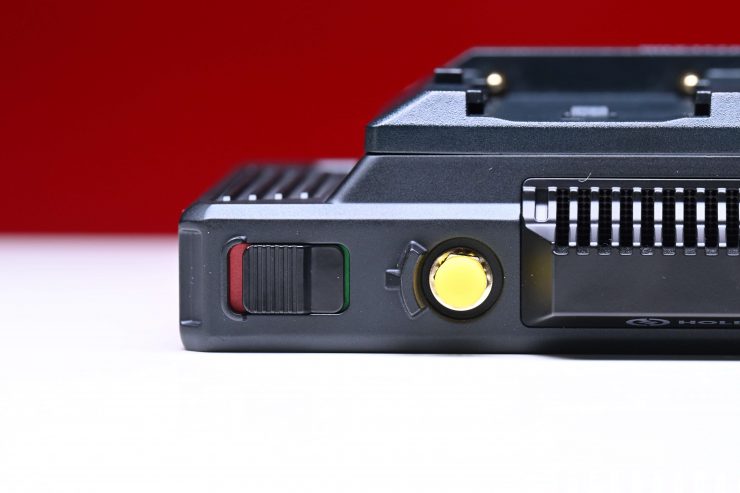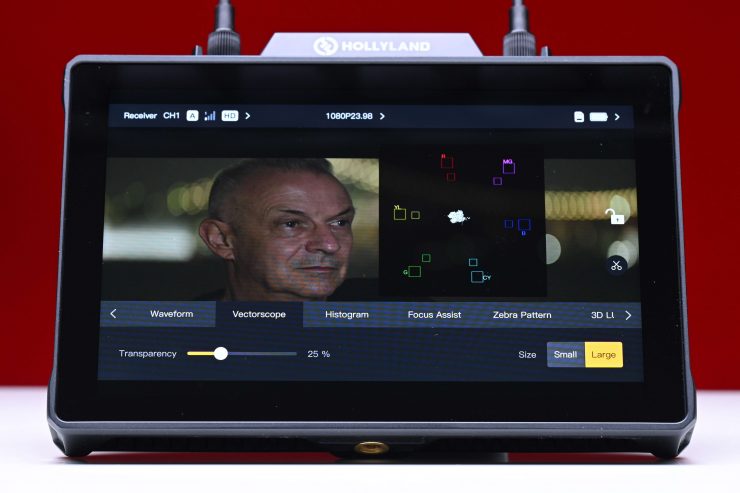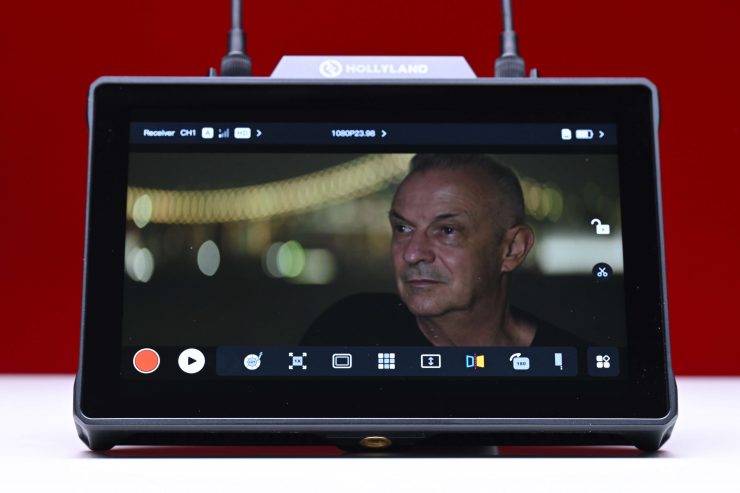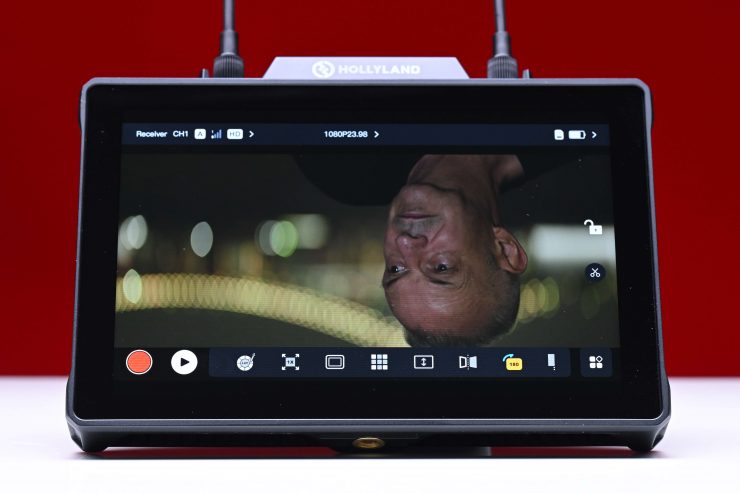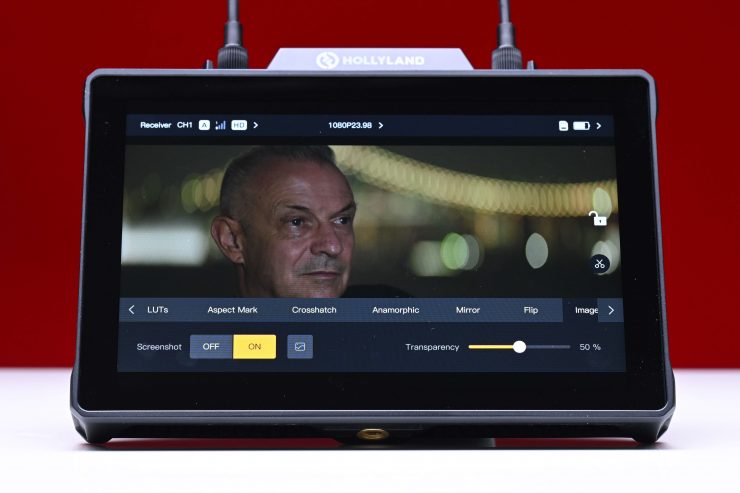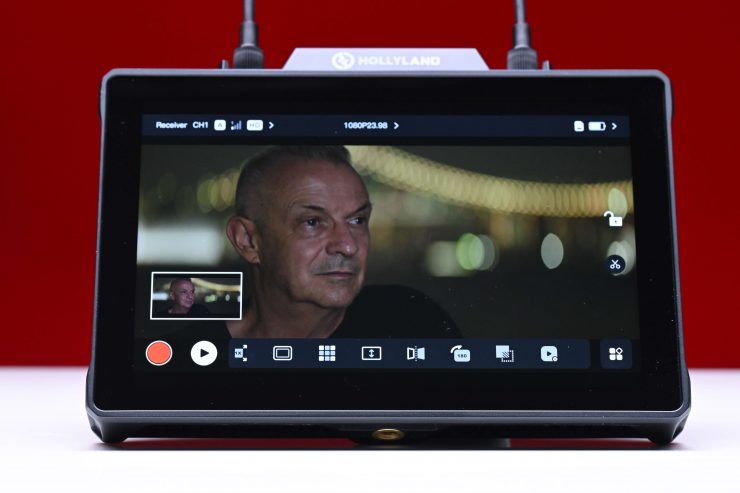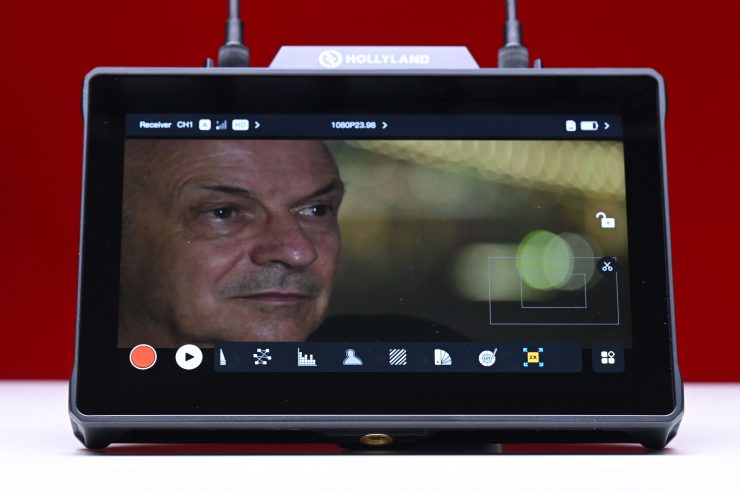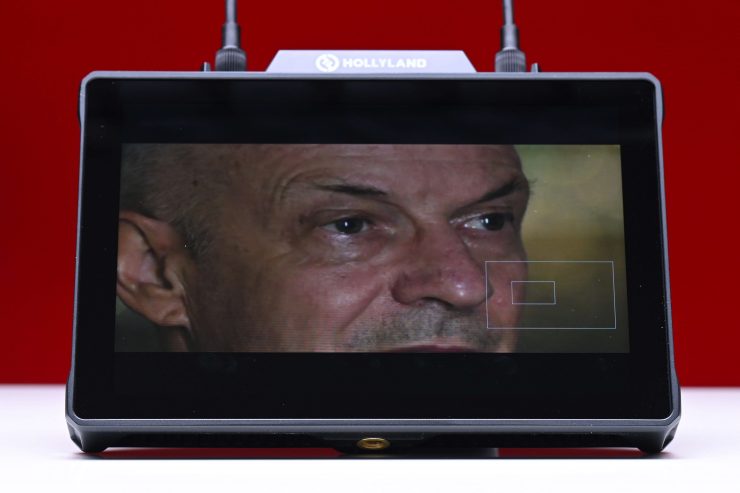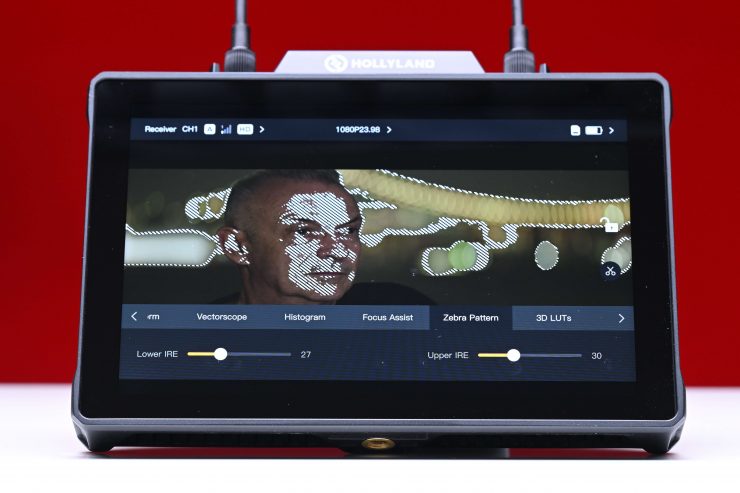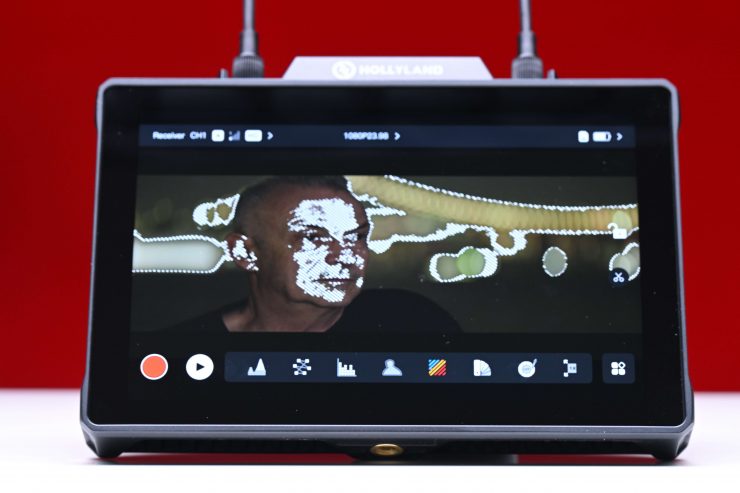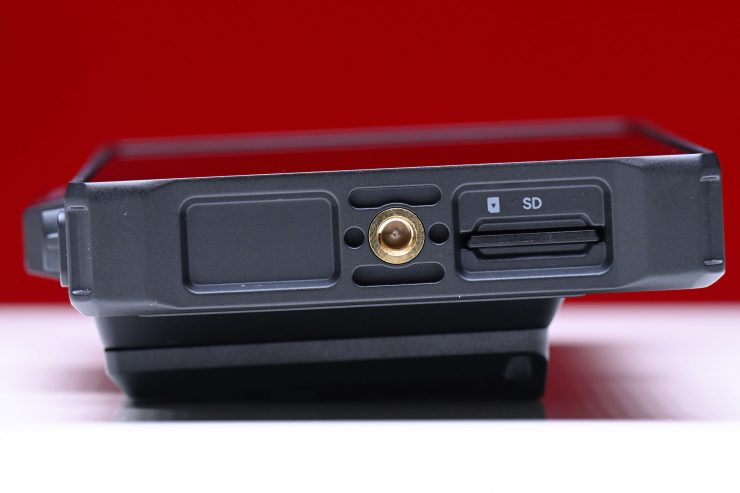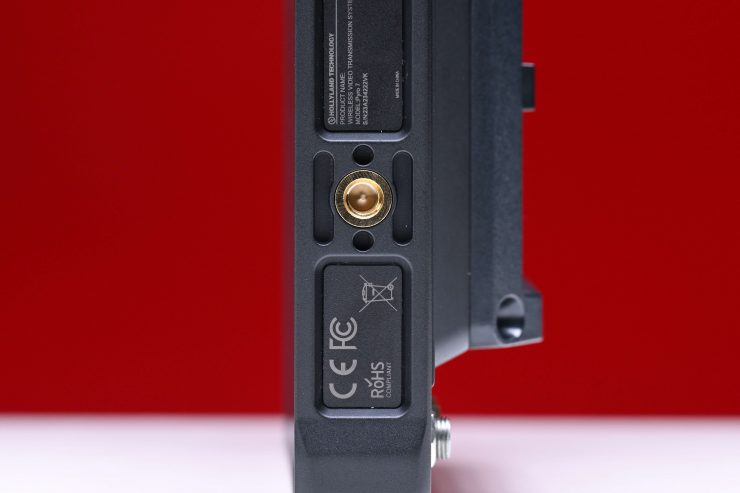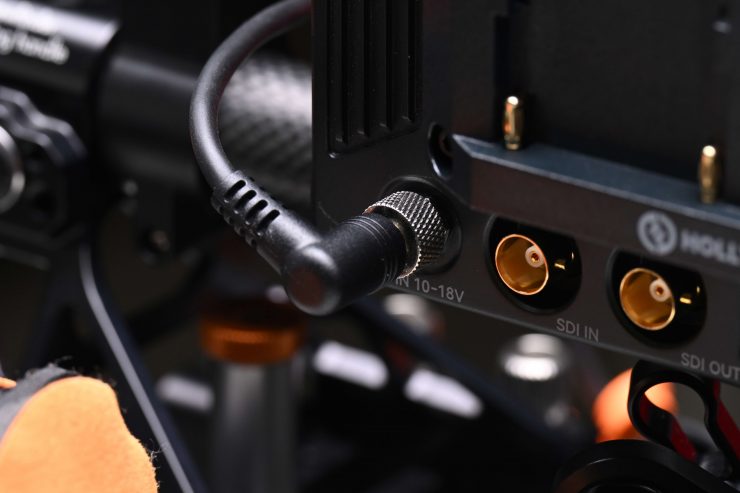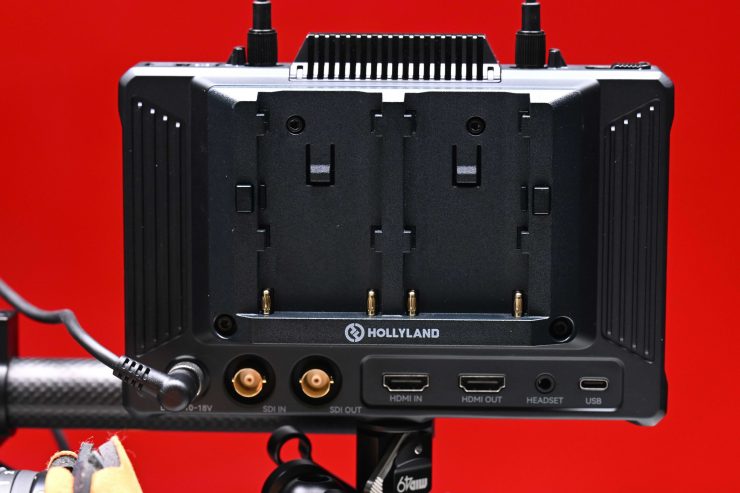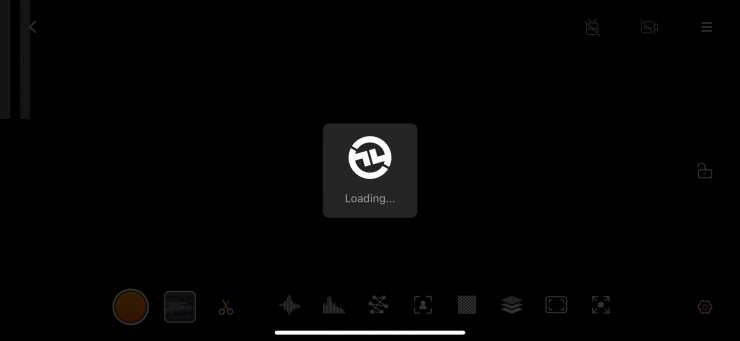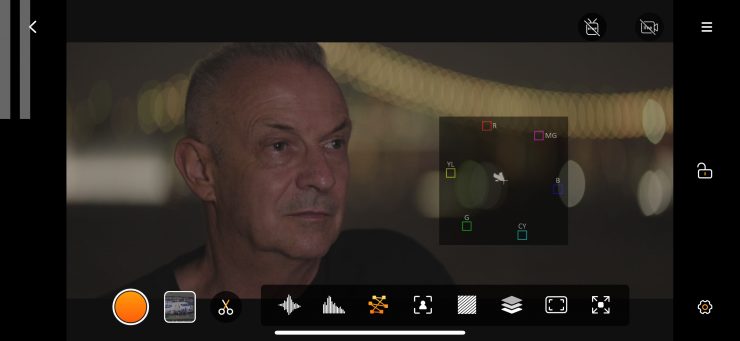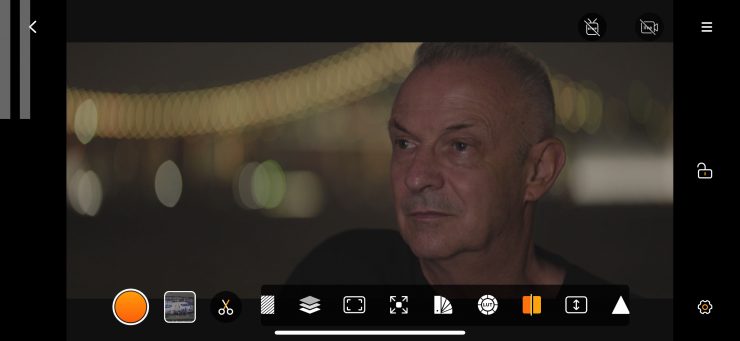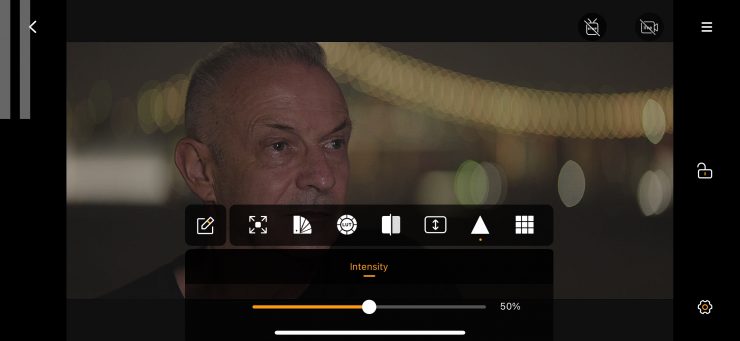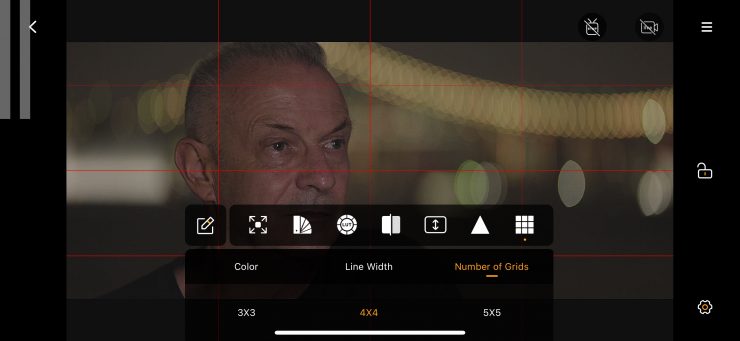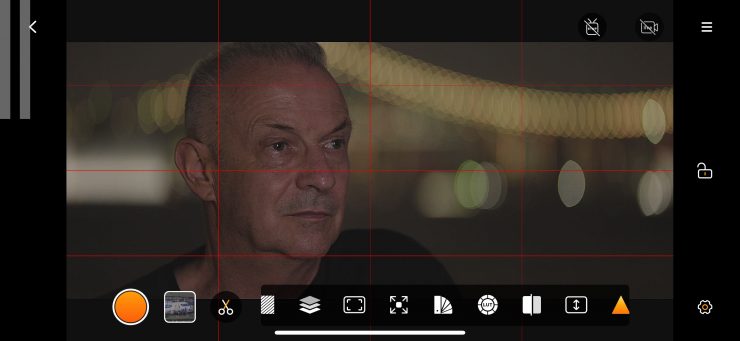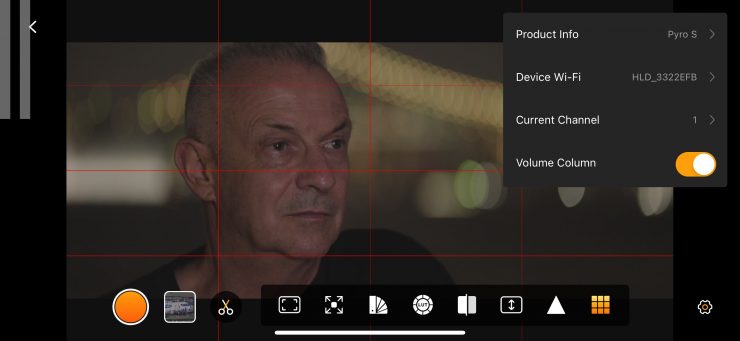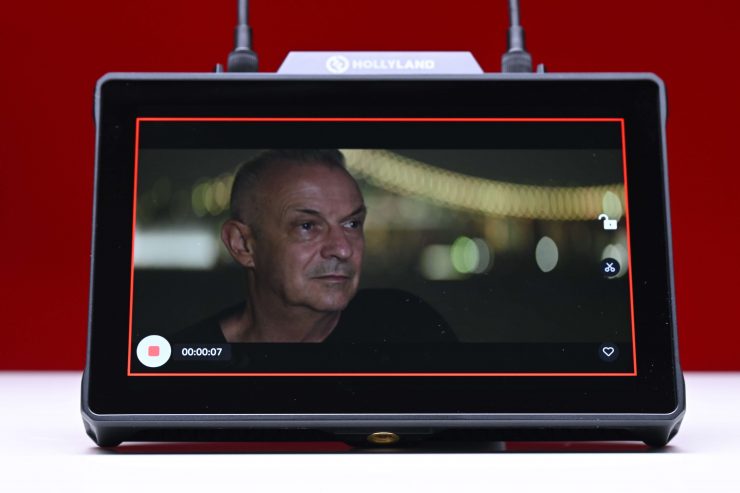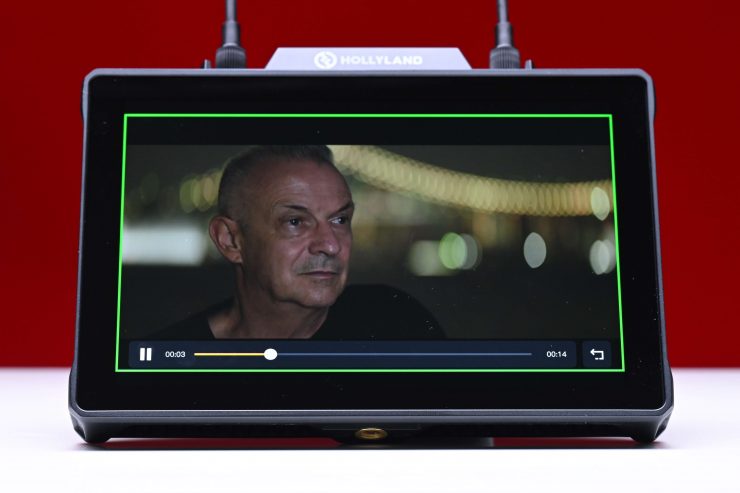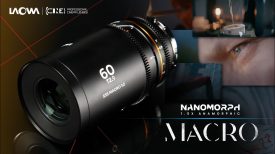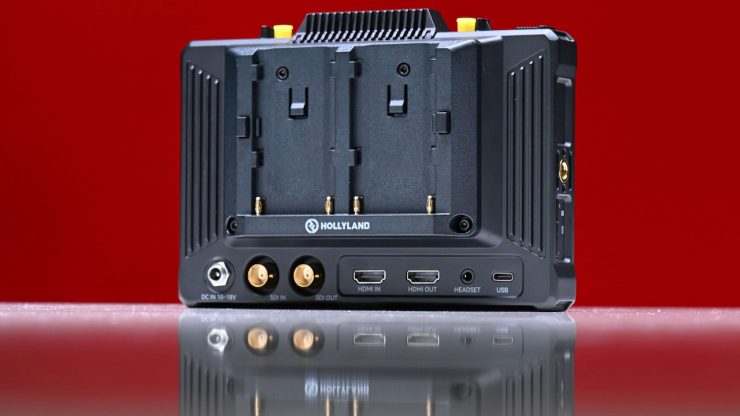
The Hollyland PYRO 7 is a 7″ TX/RX monitor that will work with the PYRO H and PYRO S wireless video transmitters.
We have seen quite a few companies bring out monitors with wireless video capabilities and the PYRO 7 now joins that long list of options that are available.
In case you are not familiar with the Hollyland PYRO series, I have reviewed both the PYRO H and PYRO S systems on the site.
The PYRO system is a multi-person mobile wireless image transmission and monitoring solution for small or medium commercial and filmmaking teams.
The PYRO series is available in two versions; the PYRO H has HDMI input/output, while PYRO S has both HDMI and SDI input/output.
Concept

The concept, like most of the other monitors with wireless video capabilities, was pretty simple. Come up with an on-camera monitor that can also transmit or receive wireless video.
It also had to be switchable so you could use it as a TX or RX unit and it needed to also work with the Hollyland PYRO S and H TX/RX units.
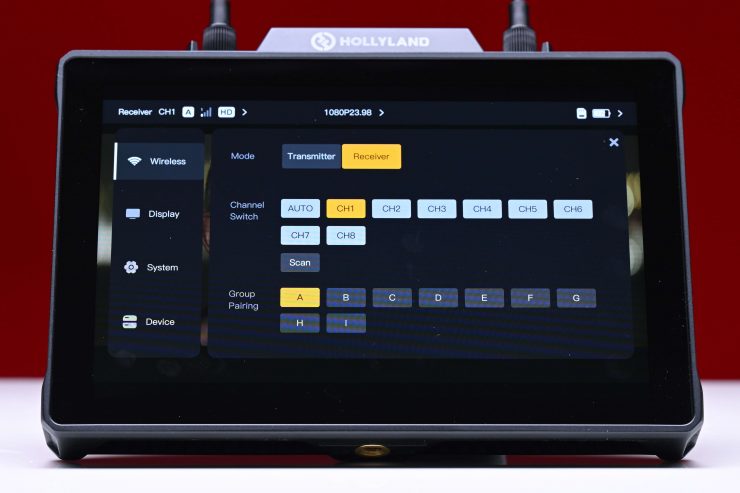
As I just mentioned, the PYRO 7 has the ability to be used as a wireless TX or RX unit. All you have to do is choose how you would like to configure it in the menu.
In a lot of ways, the PYRO 7 is a larger version of the M1 Enhanced that was announced last year, except it utilizes dual-band technology and it has a far greater operating range.
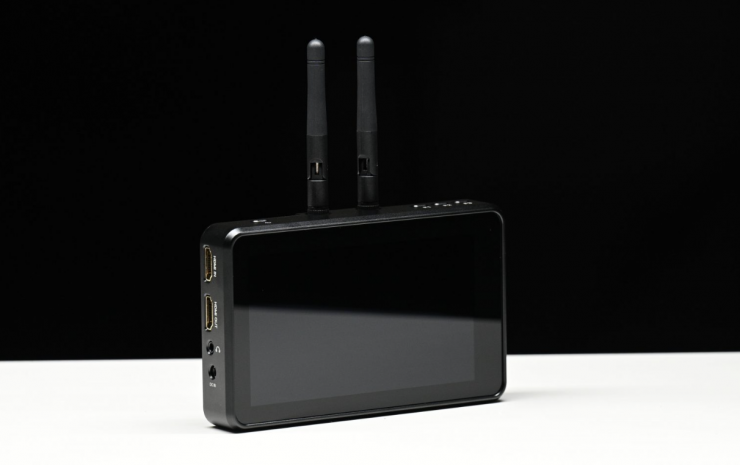
Despite being 7″, arguably the Hollyland PYRO 7 is in direct competition with the Vaxis Atom A5 and Shimbol ZO600M 5.5″ Wireless Video Transmission Device that I have both previously reviewed on the site. Both the Vaxis and the Shimbol feature very similar functionality to the PYRO 7. The big advantage the PYRO 7 has over the competition is that it has both HDMI and SDI inputs and a larger screen.
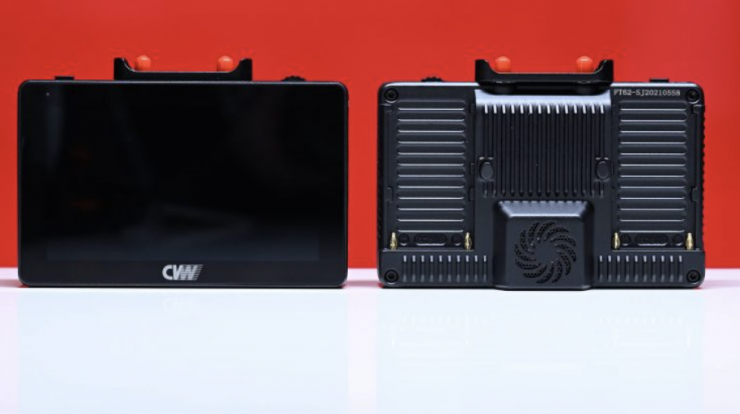
Another budget option that competes with both the Vaxis and Shimbol offerings is the Crystal Video Technology Swift Z 5.5″ HDMI 1080p Wireless TX/RX Dual-Monitor Kit which I have also previously reviewed on the site.
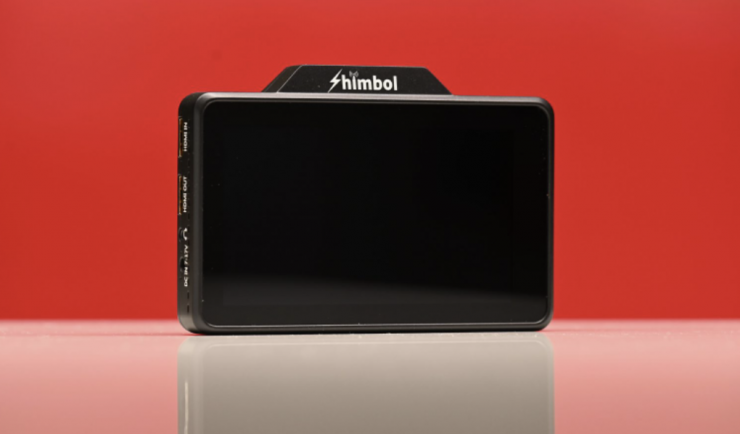
The competing Shimbol ZO600M 5.5″ Wireless Video Transmission Device looks slightly different from the PYRO 7 as it features internal and not external antennas.
The whole philosophy behind the PYRO 7 is convenience and affordability. By integrating wireless into a monitor you take away some of the pains of traditional wireless monitoring. You only need to power one device, don’t need to mount one product to another and you don’t need to run any additional cables. By keeping things simple, it allows filmmakers to spend more time actually creating, instead of worrying about equipment. Having the ability to use one product as a TX or RX unit also makes a ton of sense.
We have seen quite a few companies bring out affordable wireless monitoring solutions in the last few years. This has made it increasingly easier for anyone on a budget to purchase a wireless monitoring solution without having to spend a lot of money.
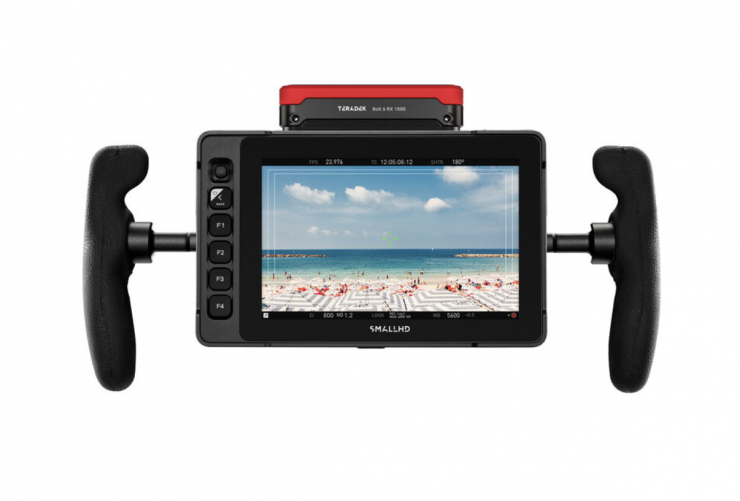
Integrated wireless video is nothing new and SmallHD and Teradek have been doing it for a very long time, however, their products are aimed at a different segment of the market and utilize uncompressed video transmission technology. This is why I wouldn’t consider the SmallHD ULTRA 7 Bolt 6 TX 1500 Monitor as competition to the PYRO 7.
Key features
- 7″ touch screen monitor
- 1920 x 1080 resolution screen
- 1200 nits brightness
- 1000:1 contrast ratio
- HDMI input and output (1.4b)
- SDI Input (3G-SDI)
- Built-in wireless TX or RX
- USB Type-C interface
- SD card slot
- 3.5mm headphone jack
- Wide range of monitoring tools
- DC input & DC output
- 3D-LUT Suport
- 1300′ / 400m operating range
- Viewable on up to 4 devices using the HollyView iOS or Android App
Who is it aimed at?
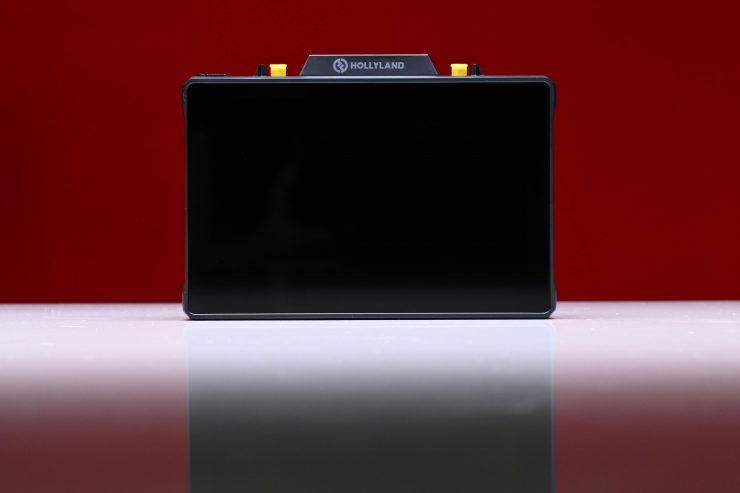
The PYRO 7 is clearly being targeted at users who are looking for an affordable all-in-one wireless monitoring solution, with the added versatility of being able to use it as a stand-alone monitor and send images simultaneously to an app. This could mean anyone from people starting out on a budget, right up to seasoned professionals. If you don’t require a system that can send or receive uncompressed images, then a product like the PYRO 7 makes a lot of sense for a whole lot less money.
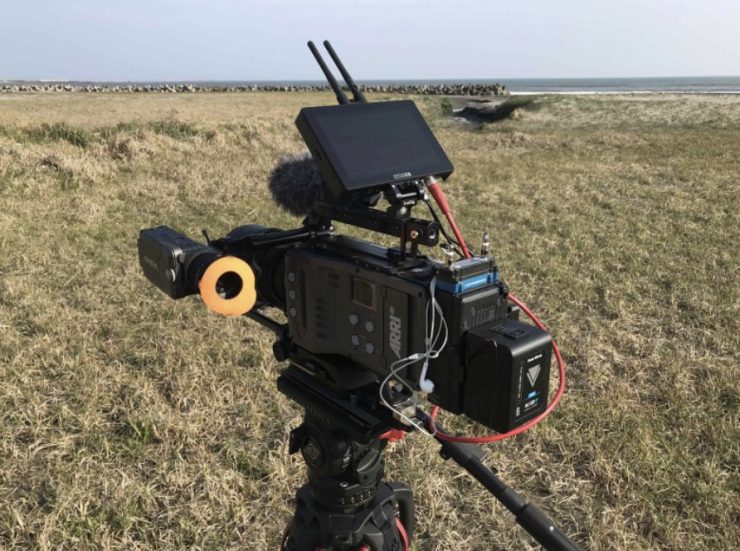
Shooters working on mid to high-end factual productions will often get requests to provide a wireless monitoring solution as part of their kit. Previously I have used solutions like the SmallHD Cine7 500 TX and a SmallHD Focus 7 Bolt 500 RX. Even though both these products are a little long in the tooth now, they still serve me well. However, you can get by with a lot more affordable solutions depending on the requirements of the production.
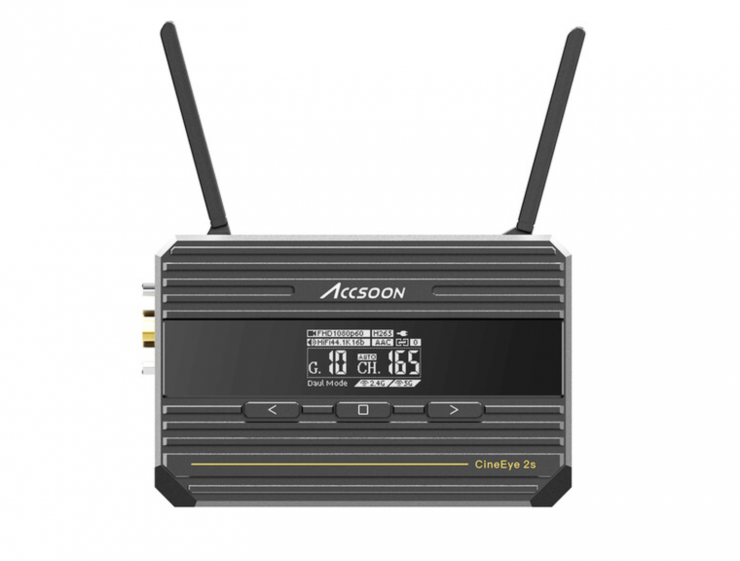
Occasionally I will also use Wi-Fi-based TX units such as the Accsoon CineEye 2S Wireless SDI/HDMI Video Transmitter that can send signals straight to multiple mobile devices. It really is a case of choosing the right tool for the job and within the constraints of the budget.
As I already mentioned, one of the advantages of using something like the PYRO 7 over a traditional wireless device is that you can also use it as an on-camera monitor whenever you don’t need to provide a wireless video system. This is likely to make it more appealing than a stand-alone wireless system. Versatility is increasingly becoming more of a factor when people are choosing kit.
Build Quality
The build quality of the PYRO 7 is very good. I personally found it to be fairly comparable to the Vaxis A5, Atomos Ninja V, or Ninja V+. In my opinion, it is a lot more solidly made than most budget monitors with integrated wireless that I have come across. Hollyland continues to improve its build quality and its latest products are better made than previous versions I have seen.
The entire casing is made out of aluminum and even though it doesn’t weigh that much, it still feels robustly made.
There are two function buttons on top of the PYRO 7 and a sliding power button.
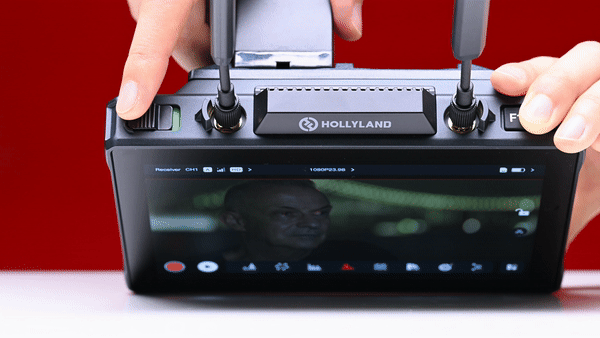
The problem I had with the sliding power button was that it was too easy to move it and accidentally turn the monitor off.
Weight & Size
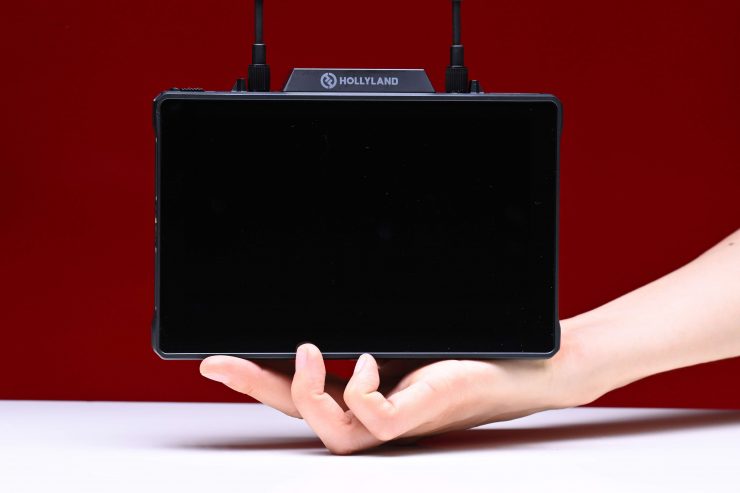
The PYRO 7 weighs 549g / 19.2 oz. As a comparison, the smaller Hollyland MARS M1 tips the scales at 380g / 13.4 oz. The PYRO 7 has physical dimensions of 18 x 12.7 x 3.2 cm (L x H x W).
As another weight reference, the SmallHD ULTRA 7 Bolt 6 TX 1500 Monitor weighs 900g / 2.0 lb.
What you also clearly have to remember is that you need to power the PYRO 7 and once you add one or two Sony NPF batteries on the back, the overall weight is going to increase quite a bit.
I personally think that the PYRO 7 is too big to utilize on mirrorless hybrids and small-sized digital cinema cameras.
Screen
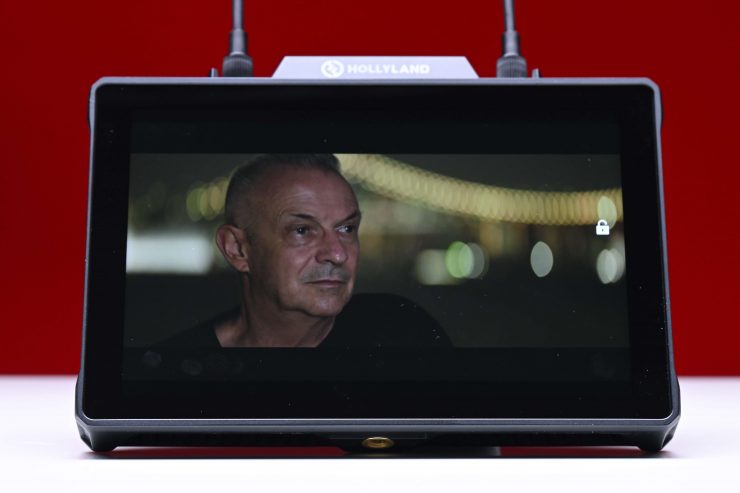
The PYRO 7 utilizes a 7″ 1920 x 1080 resolution screen with a claimed brightness of 1200nits and a contrast ratio of 1000:1. It has a pixel density of 323PPI. 1200nits is a 20% increase over the M1 Enhanced that has a brightness of 1000nits. As another comparison, both the Vaxia A5 and Shimbol ZO600M feature a 5.5″ 1920 x 1080 resolution screen with a claimed brightness of 1000nits and a contrast ratio of 1200:1.
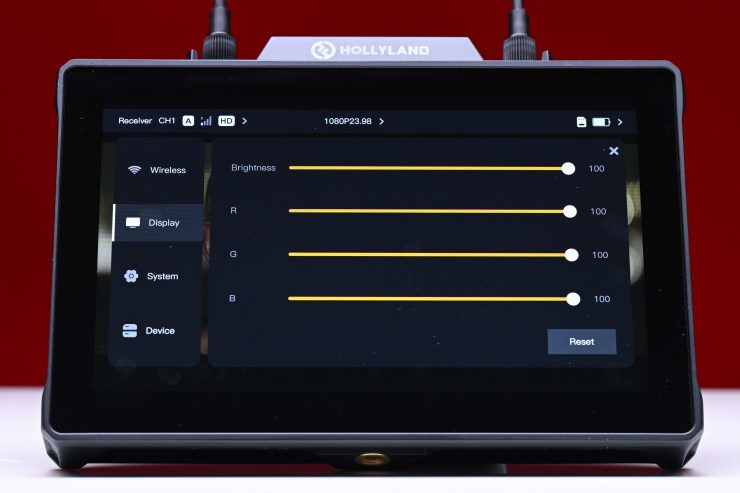
As far as the image controls are concerned, you don’t have many options. You can change the brightness in the Display Settings and adjust individual red, green, and blue channels, but that is it.
There is no ability to adjust contrast, saturation, sharpness, or the backlight. These are all things you can adjust on the competing Vaxis A5.
OS
I like the new OS system that Hollyland is now using and it feels cleaner and more intuitive to use.
The icons are easier to see and you don’t end up having to guess what they do.

On the main page, you have a series of view assist tools at the bottom of the screen, along with record and playback buttons.
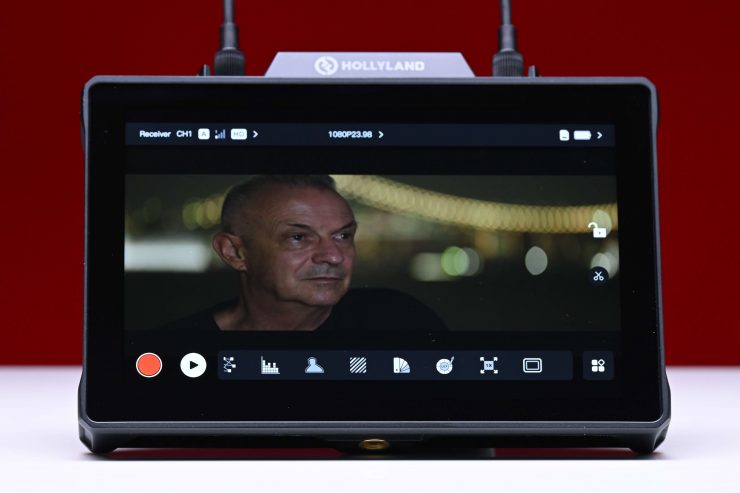
On the far right-hand side, there is a little icon that brings up additional tools for the following items:
- Waveform
- Vectorscope
- Histogram
- Focus Assist
- Zebra Pattern
- 3D LUTs
- Aspect Mark
- Crosshatch
- Anamorphic
- Mirror, Flip
- Image Overlay
- Video Recording
With the various scopes, you can change their transparency and size. You can also just drag them around on the screen using your finger.
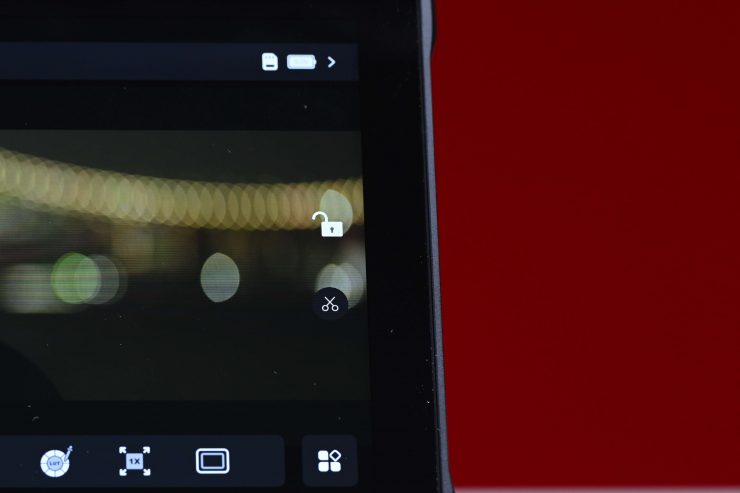
There is also a little scissor icon that if you press on it, will take a screenshot.
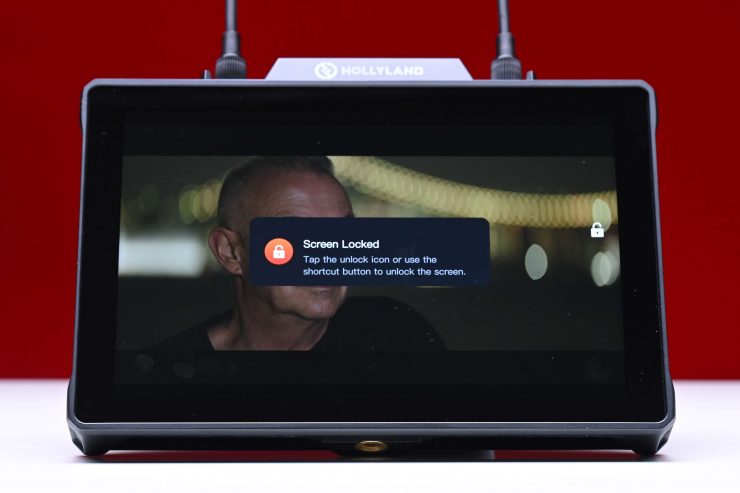
There is also a screen lock icon where you can lock or unlock the screen.
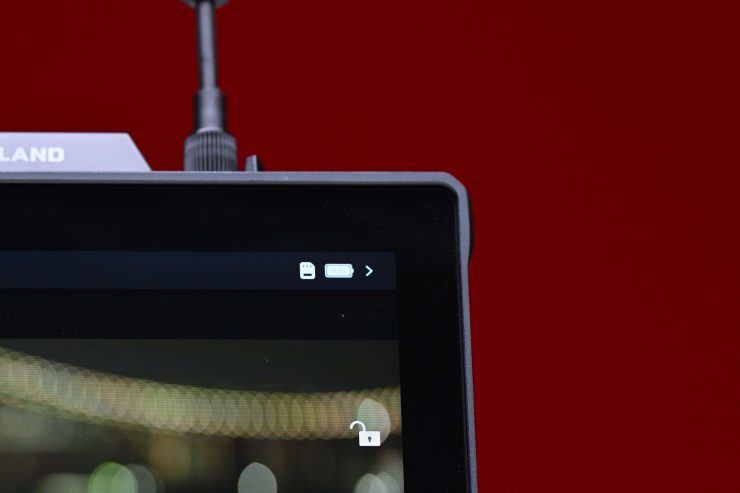
In the top right-hand corner of the screen, you can see the battery status.
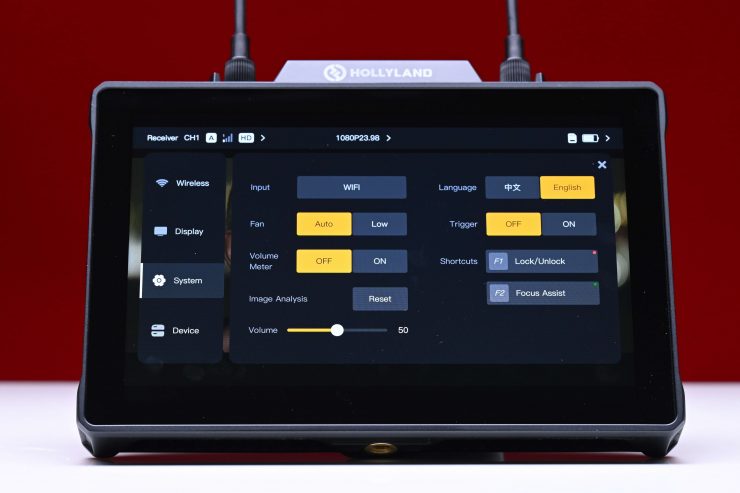
If you tap on this you get taken to a menu screen where you have the following categories:
- Wireless
- Display
- System
- Device

In the Wireless section, you can do the following:
- Turn the wireless on/off
- Change the operating mode between TX or RX
- Turn the Broadcast Mode on/off
- Change the Scene Mode between Smooth Mode and HQ Mode
- Choose the Wireless channel
- Select Group Pairing

In the Display section, you can do the following:
- Change the brightness
- Individually adjust the red, green, and blue channels
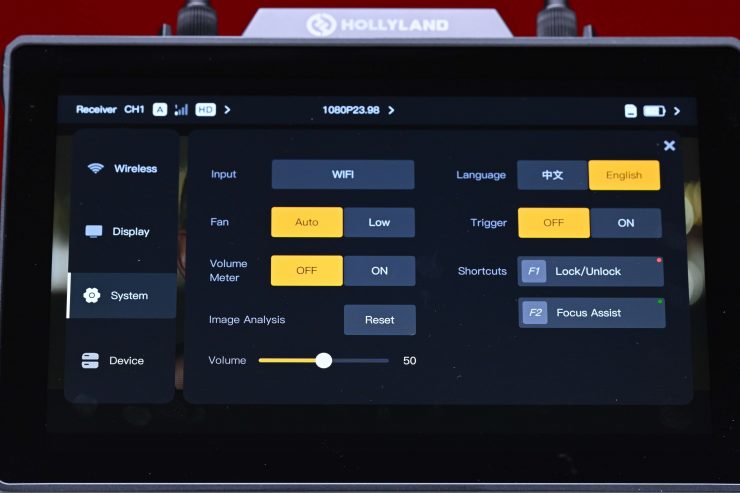
In the System section, you can do the following:
- Change the input between HDMI or SDI
- Change the operating language
- Change the fan between Auto or Low
- Turn the record trigger on or off
- Turn the volume meter display on or off
- Turn Frozen Frame on or off
- Reset Image Analysis
- Change what the F1 and F2 function buttons do
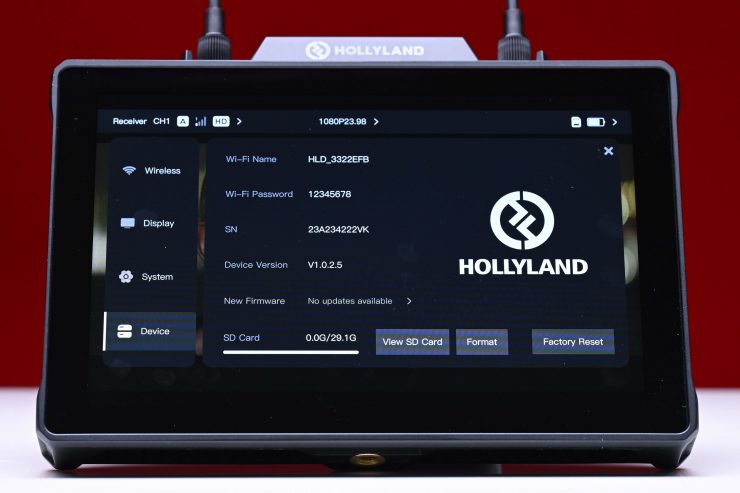
In the Device section, you can see information about the PYRO 7 and view and format the SD card.
View Assist Features
There are anamorphic de-squeeze viewing options for:
- 1.25
- 1.33x
- 1.5x
- 1.66x
- 1.78x
- 1.8x
- 2x
- Custom
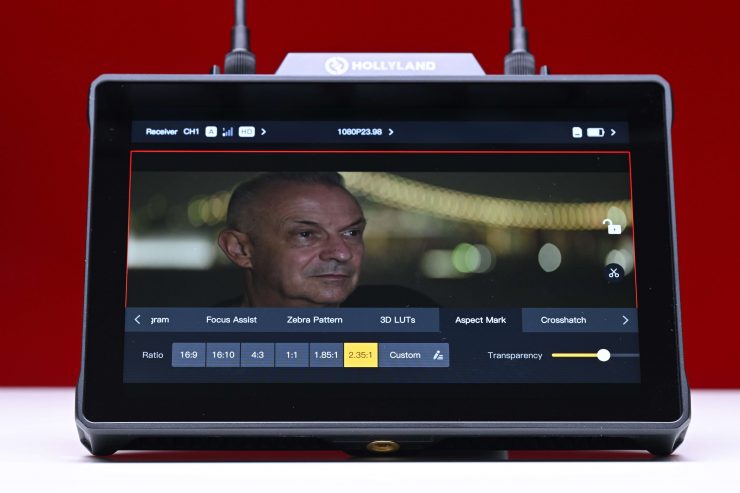
You also have the ability to set frame markers, as well as a center mark and grid lines. With the frame markers, you can set the following:
- 16:9
- 16:10
- 4:3
- 1:1
- 1.85:1
- 2.35:1
- Custom
With grid lines, you can set the following:
- 3×3
- 4×4
- 5×5
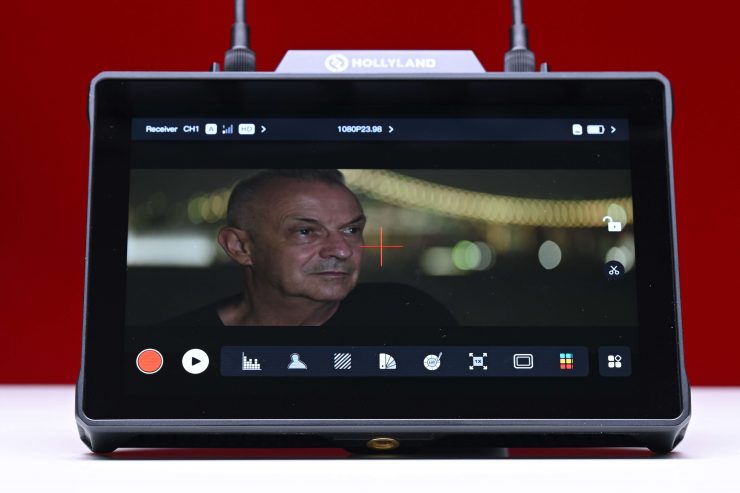
With the center mark and grid lines you can choose to change the color between red, green, blue, and yellow.
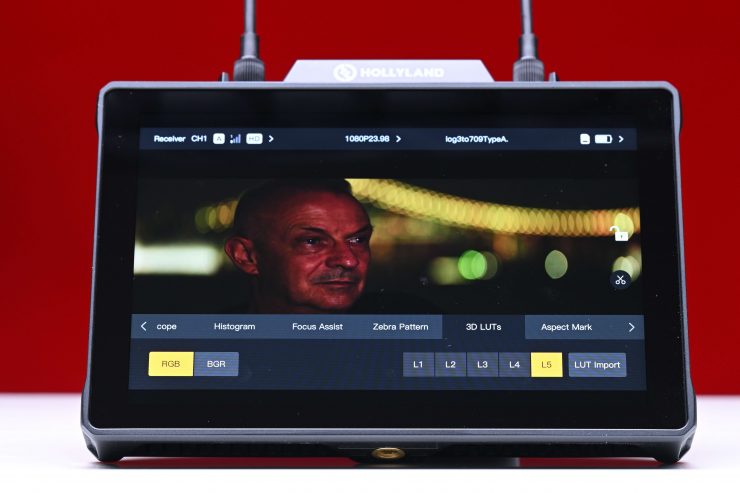
You can set 5 different LUTs as presets and you can also load up your own LUTs via the SD card slot. Below are the 5 LUTs that are loaded as standard:
- Canon C-Log
- Canon C-Log2
- Sony S-Log
- Sony S-Log2
- Slog3 to 709 Type A
The monitor also features the usual exposure and focus assist tools such as:
- Histogram
- Waveform
- Vectorscope
- Monochrome
- Image Zoom
- Peaking
- Frame Markers
- Zebras
- Image Flip
- False Color
- LUTs
- Anamorphic de-squeeze
- Grid
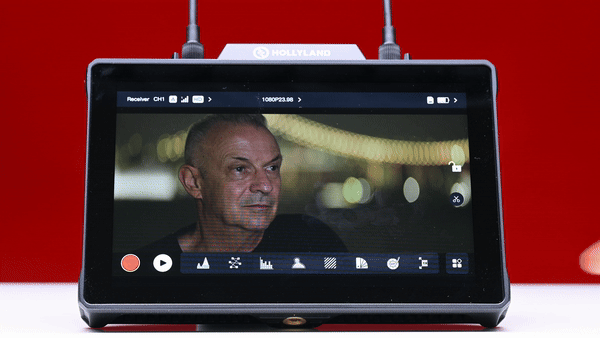
You can have multiple tools selected at once, even a range of video scopes.
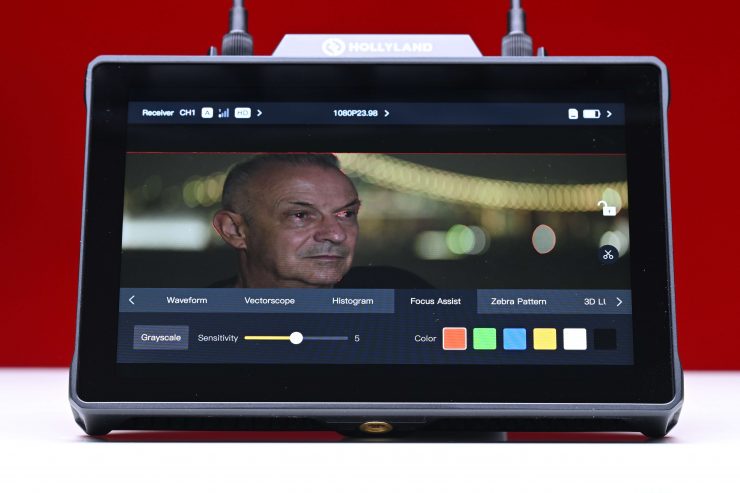
The peaking (Focus Assist) can be set to red, blue, green, yellow, or white, and you can change the intensity.
With the image zoom, you can choose from:
- 1x
- 2x
- 4x
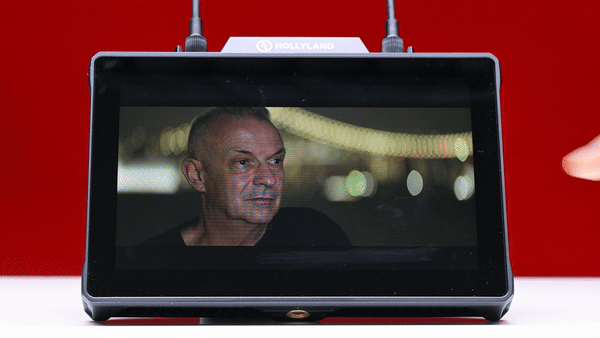
Once you select your magnification you can then move around your image to show different parts of your scene.
You can’t do pinch to zoom with the PYRO 7 which is a little odd given that just about every touchscreen monitor has that capability.
With the zebras, you can set a lower IRE and higher IRE value.
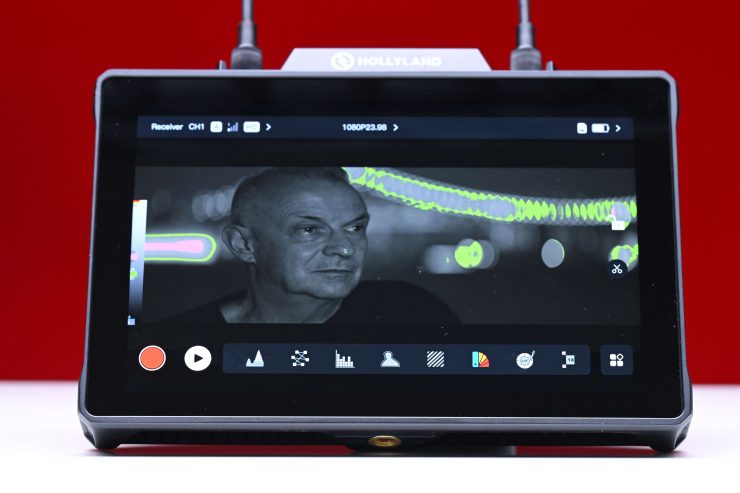
With False Color, you can see a color scale with some IRE markings, but I have no idea what camera the false-color scale is based on. So many companies making monitors just can’t seem to get false color right. This is not just aimed at Hollyland because so many other brands also do exactly the same thing.
Control
You have to operate the PYRO 7 via the touchscreen, however, it does have two function buttons on the top and a sliding power on/off switch.
Not having any physical buttons to access all of the functionality can be a problem if you are wearing gloves and I would have liked to have seen a basic menu button and a scroll wheel included.
The other small complaint I have about the operating system is that if you are selecting any feature that has multiple options you can’t just turn that function on or off. You need to cycle through all of them which is a pain. I wish there was a way that if you long pressed on the icon it would turn it back to the default.
Is it noisy?
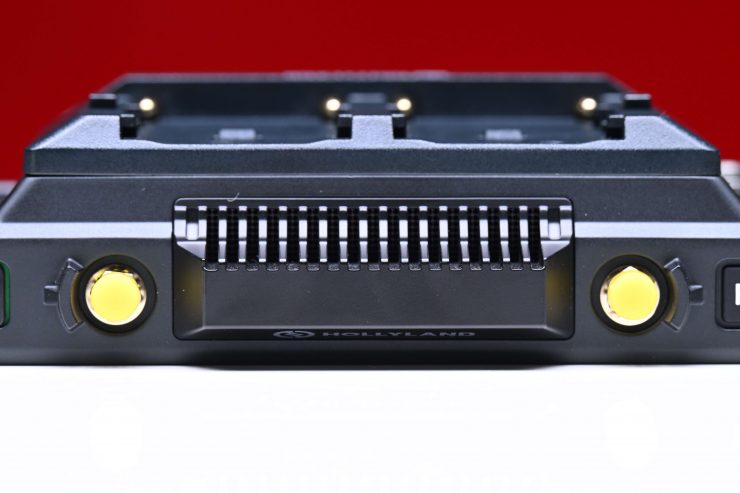
The PYRO 7 does feature an in-built fan.

You can choose to select Auto or Low in the menu. In Auto mode, it is reasonably quiet even after it has been left on for a while.
Now, if you select Low then it is extremely silent, however, I wanted to see how long it would stay like that with the fan in this setting.
I left the PYRO 7 on for a few hours to see how hot it would get and does start to get quite warm, however, it never got to the point where it was too hot to hold.
Transmission Range
When the PYRO 7 is transmitting to two RX units the range is claimed to be up to 1300′ / 396.24m. If you are transmitting to more than two RX units (Broadcast Mode) then that distance will decrease to 650′ / 198.12m. I will test this claim further down in the review.
What can it transmit and receive?
If you are using the PYRO 7 as a TX you can do the following:
- One PYRO 7 TX can send signals to four other PYRO H/S or PYRO 7 units set in RX mode
- One PYRO 7 can send signals to one other PYRO 7 set in RX mode and up to two devices running the HollyView App
- One PYRO 7 can send signals to four devices running the HollyView App
Again, the versatility that the PYRO 7 offers is impressive. The ability to use this product in numerous different ways with a range of different TX and RX units arguably sets it apart from the competition.
Inputs/Outputs

The PYRO 7 has the following inputs and outputs:
- HDMI In (1.4b)
- HDMI Out (1.4b)
- SDI In (3G-SDI)
- SDI Out (3G-SDI)
- DC In (10-18V / 2.5A)
- USB-C Port
- 3.5mm Headphone Jack
It is good to see Hollyland doing something a little different from everyone else in the budget space. Including an SDI in and out adds versatility and it is likely to make the PYRO 7 more attractive to potential customers.
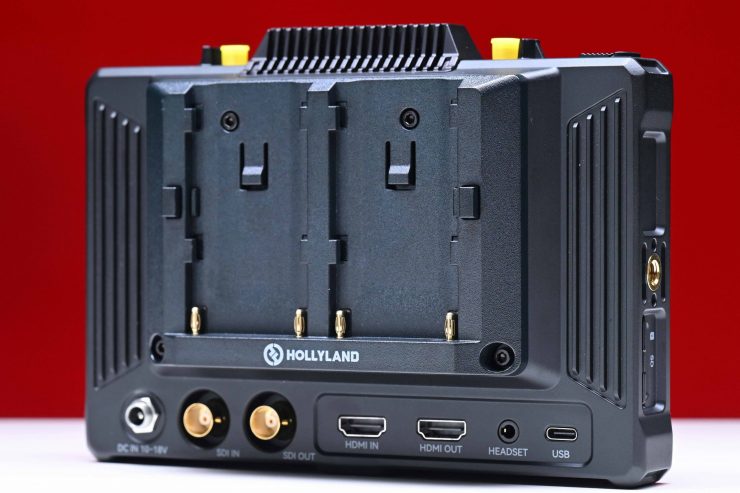
The HDMI inputs and outputs are all located on the back of the monitor.
The SDI input and output are also on the back of the monitor, along with the DC Input, and the headphone jack.
The HDMI ports are not countersunk, so there is no protection from knocks or breakage, however, because they are located on the back of the monitor and not on the side, I think this is ok. I personally don’t like having inputs or outputs on the side of a monitor.
Mounting Points
There are three 1/4-20″ threads on the PYRO 7. One is on the bottom of the monitor and you also have threads on both the left and right sides. Having three mounting points is a nice touch because all of the other competing products only give you a single 1/4-20″ mounting point.
Accepted Inputs
The PYRO 7 set in TX mode can receive the following signals over HDMI:
- UHD 3840 x 2160p 23.98/25/29.97
- 1920 x 1080p 23.98/24/25/29.97/30/50/59.94
- 1920 x 1080i 50/59.94
- 1280 x 720p 50/59.94
It can output the following signals over HDMI:
- UHD 3840 x 2160p 23.98/25/29.97
- 1920 x 1080p 23.98/24/25/29.97/30/50/59.94
- 1920 x 1080i 50/59.94
- 1280 x 720p 50/59.94
The PYRO 7 set in TX mode can receive the following signals over SDI:
- 1920 x 1080p 23.98/24/25/29.97/30/50/59.94
- 1920 x 1080i 50/59.94
- 1280 x 720p 50/59.94
What you clearly need to remember is that the PYRO 7 can only display a 1920 x 1080 image and it can only transmit a 1920 x 1080 image.
Audio Monitoring?
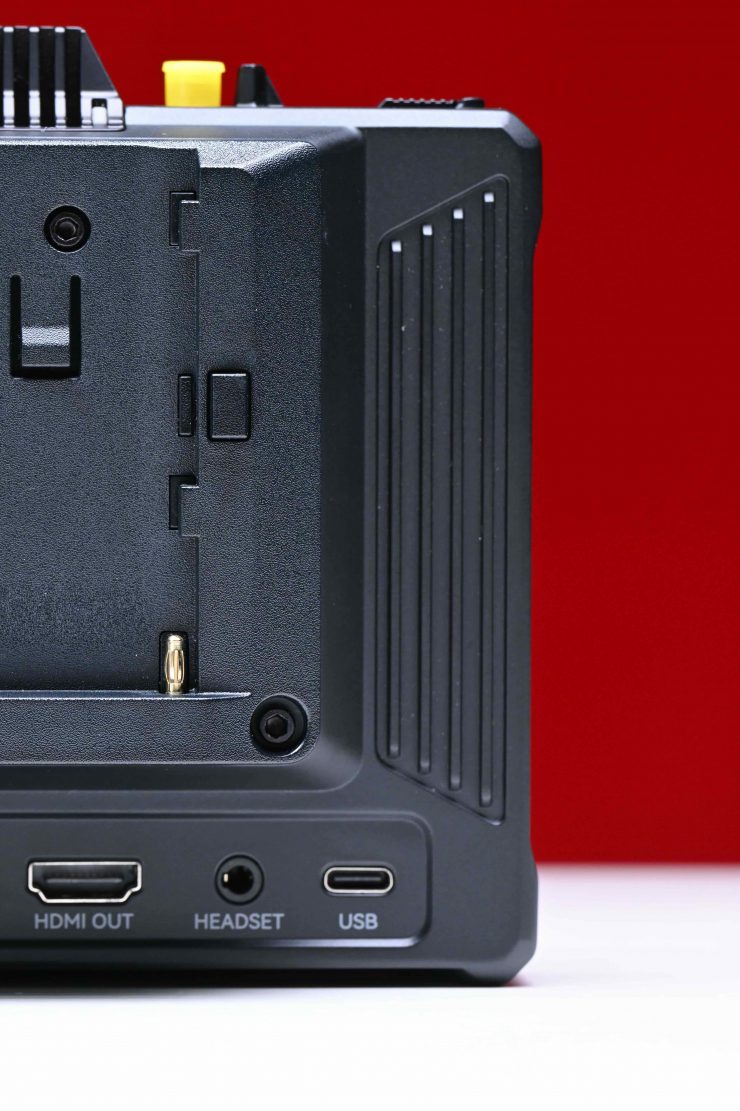
On the PYRO 7, you can bring up audio level displays and there is also a headphone out so you can listen to whatever embedded audio is coming through over SDI or HDMI. You can’t select what channel you want to listen to.
Antennas
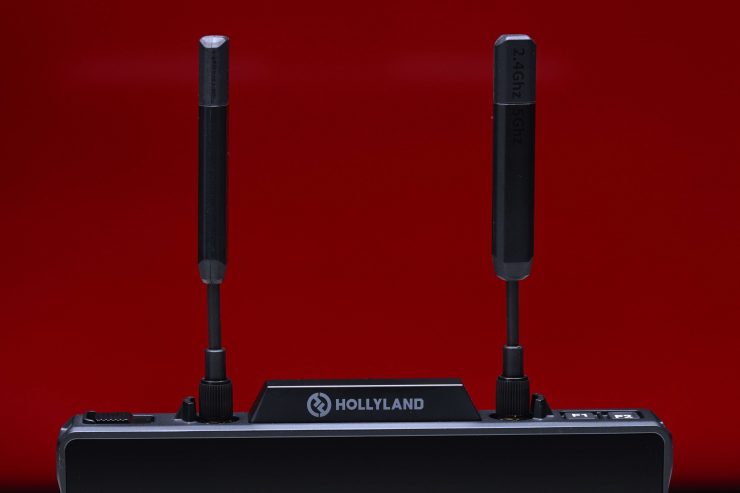
PYRO 7 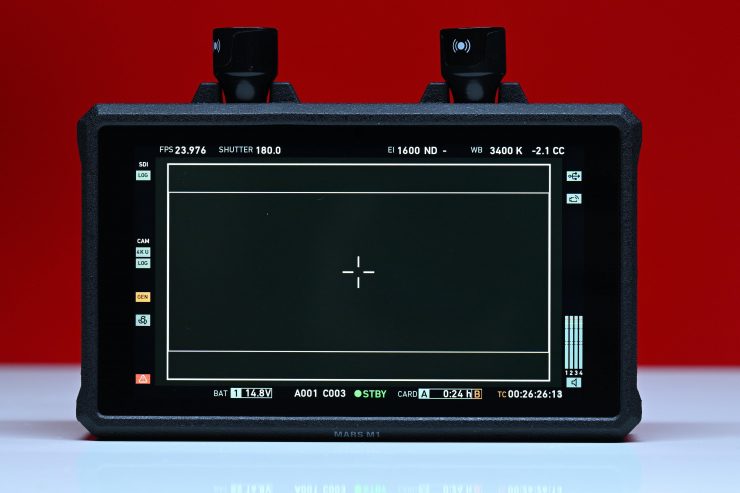
M!
The PYRO 7 features two removable antennas. These are longer than the ones that came with the M1.
Power
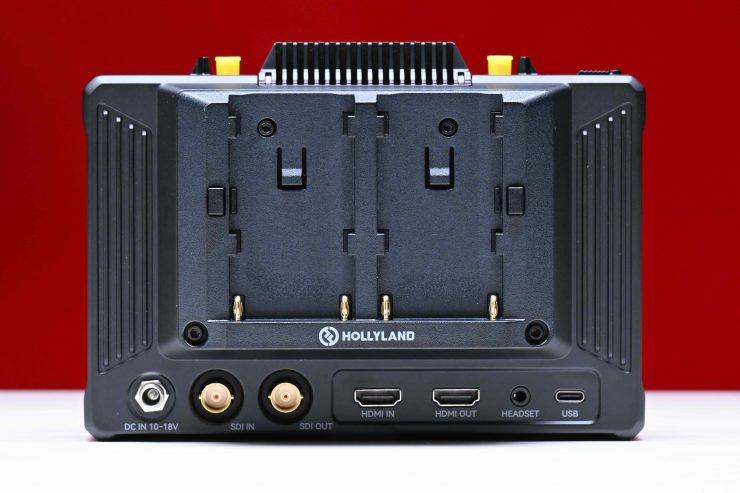
The PYRO 7 can be run from one or two Sony-style NP-F batteries or through the DC input.
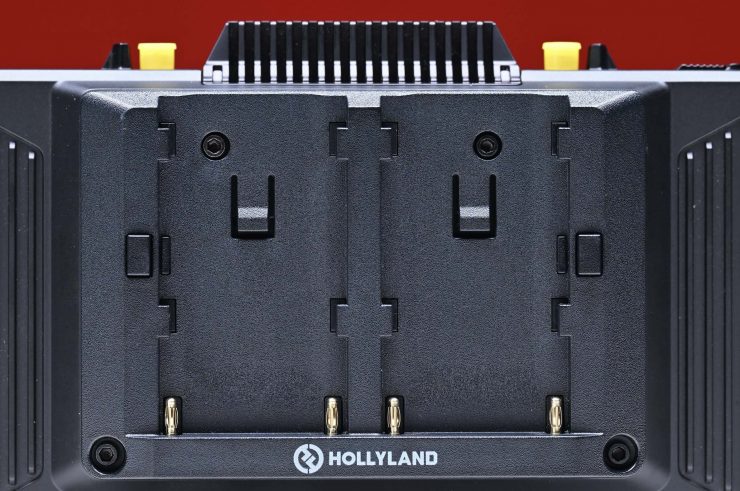
There is a dual battery plate so you can hot-swap or run the unit for longer periods of time by using two batteries.
Because of the size of the monitor, I found it better to power through the provided D-tap to DC power cable.
Hollyland did do away with the DC output that was on the M1 and M1 Enhanced which allowed you to power additional devices.
Boot Up Time
I found that the boot-up time for the PYRO 7 was around 14 seconds. This is reasonably good if you suddenly have to do something in a hurry and have to turn the monitor on from scratch.
Form factor & Usability
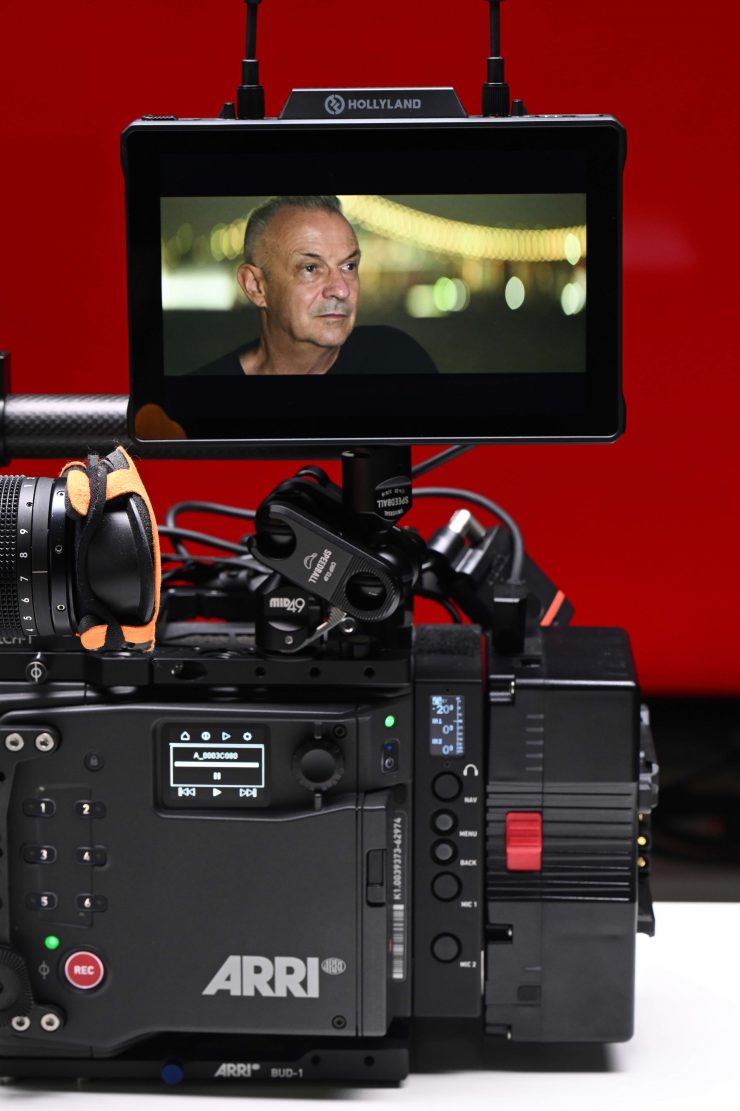
If you are going to build a product that is designed to be used on a camera and/or as a standalone director’s monitor then it not only has to be functional but also easy to use.
The PYRO 7 features a pretty basic design like most monitors this size. As I mentioned earlier in the review, I personally think that 7″ is too big for use with a small-sized mirrorless hybrid.
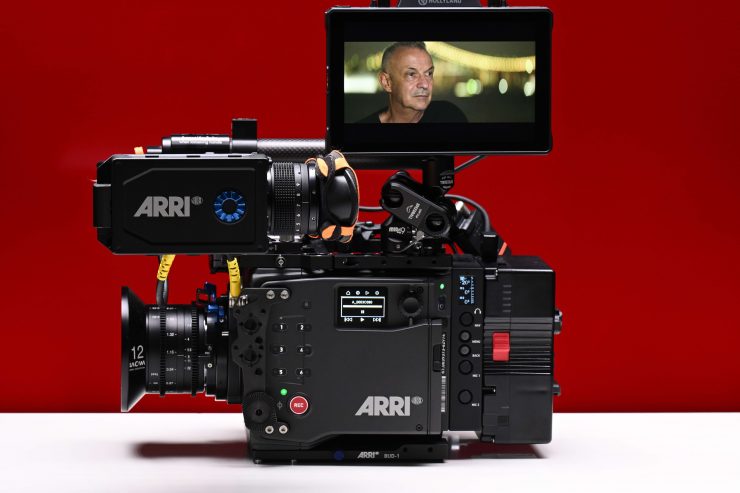
The PYRO 7 is much better suited for use with mid to larger-sized digital cinema cameras.
If you are using the PYRO 7 as an RX unit you could mount some handles and/or attach a strap. If you are giving it to a director or other member of the crew, nobody wants to hold a bare-bones monitor.
Out of the box, it is arguably difficult to hold and use. I am not sure why Hollyland didn’t at least include a lanyard so someone can put it around their neck.
If you leave the PYRO 7 on for extended periods of time it doesn’t get that hot which is nice. With the competing Vaxis A5 it gets too hot to hold after a while because it doesn’t feature any fans.
The PYRO 7 is pretty straightforward and easy to use once it has been set up. The new operating system is pretty decent, but there is always room for improvement. If you are going to primarily be using it as a director’s monitor then you probably won’t be using many of the monitoring assist features.
Wireless Plug & Play?
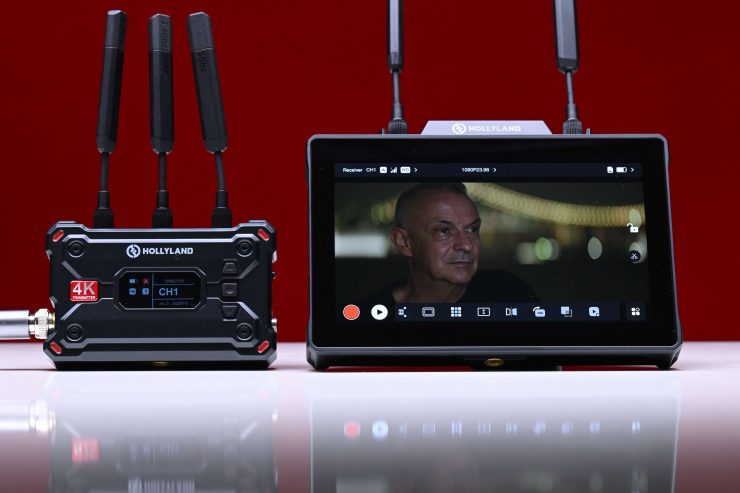
Setting up any type of wireless system needs to be intuitive and easy to do. Nobody likes messing around with equipment and wasting time on set.
The PYRO 7 is pretty much plug-and-play, but if you do need to pair up another device you can by going into the menu.
Connecting up to the HollyView app so that you can view images on your smartphone or tablet is also very easy to do. All you need to do is choose the generated WiFi network on your smartphone and then open the HollyView app. An image gets displayed straight away.

When you have the PYRO 7 set to be a TX unit you can select what channel to use and then any RX device will then automatically switch to that channel.
HollyView app
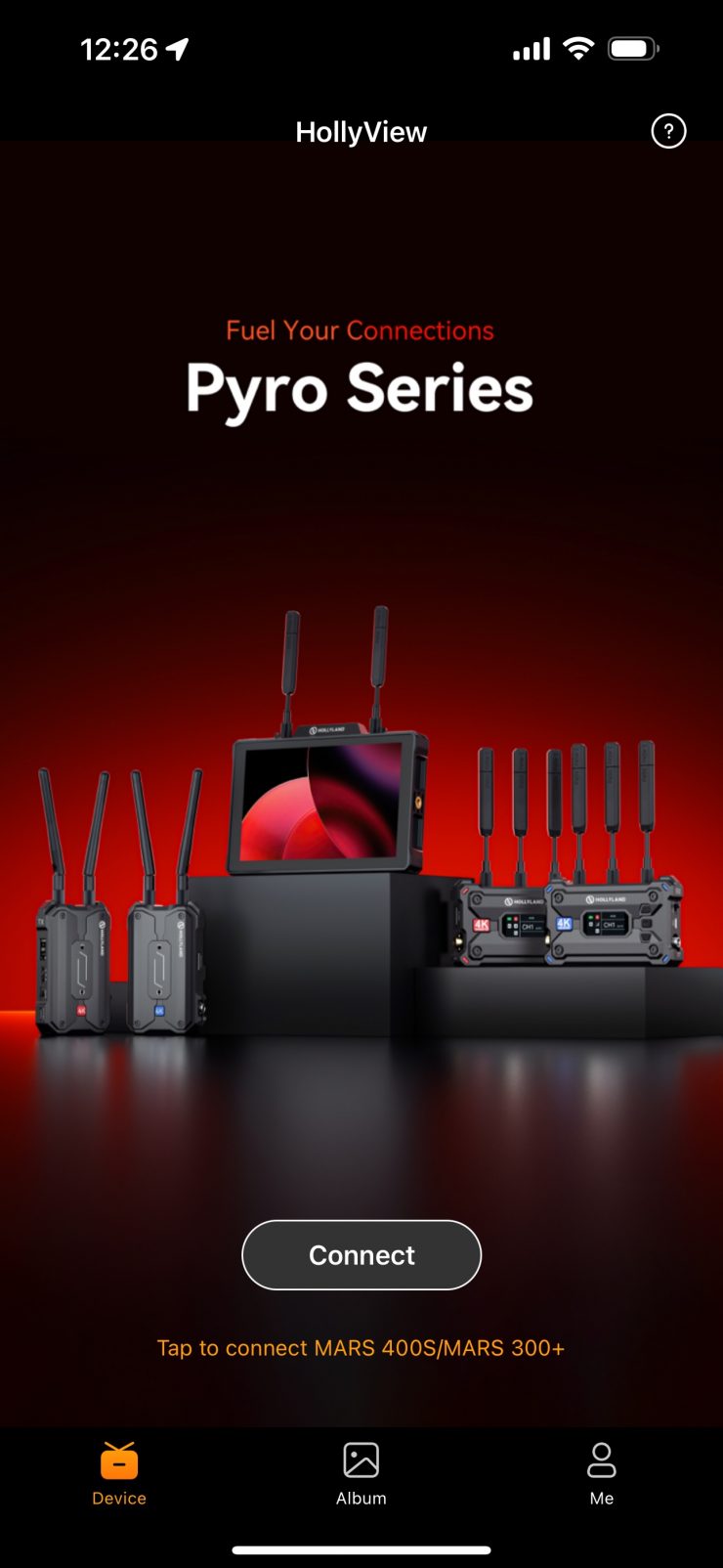
The app features some nice functionality, and it is reasonably easy to use.

It is pretty easy to get started. You only have to select the Wi-Fi network once when you first set up the app and then it will automatically ask you if you want to join that network when you open the app.
Once you hit connect it only takes a few seconds for you to receive an image.
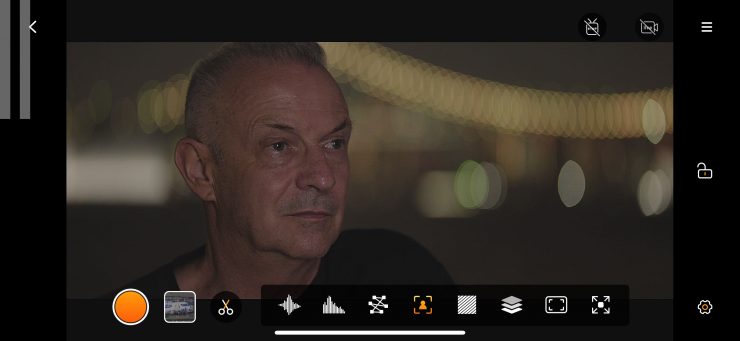
The UI layout is pretty straightforward and easy to understand and it is fairly similar to the I on the PYRO 7.
You can remove all of the overlays and see a clean feed by tapping on the screen.
There is a good array of monitoring assist tools, and I think most people will be reasonably happy with the tools and features that are available.
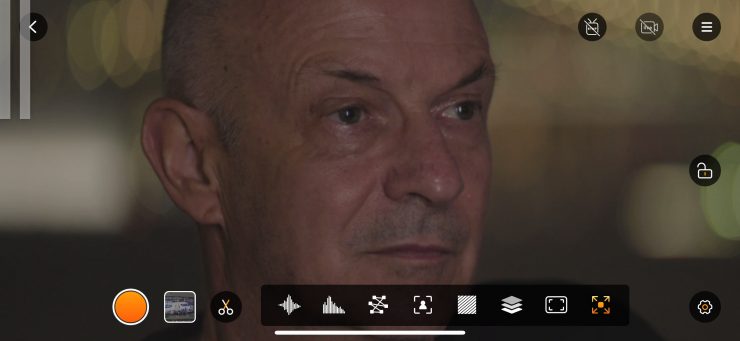
For some reason, Hollyland does offer a pinch-to-zoom magnification. Instead, you need to press the image zoom icon and then you can move the focus magnification around in the image.
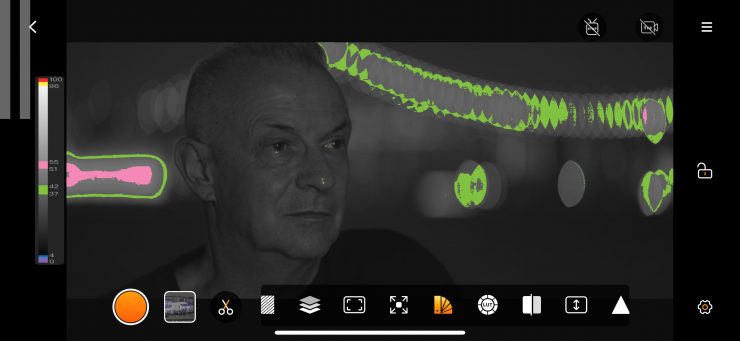
There is false color and I am glad to see that Hollyland has now added some values for it, however, it isn’t mapped to any particular camera.

With the waveform, histogram, and vectorscope, you can move them around to any position you like on the screen, and you can change their size and transparency. Unfortunately, you can’t have more than one scope at a time activated.

There is also peaking and zebras and you can change the intensity and color of the peaking. With the zebras, you can set min and max IRE values.
You can put multiple view assist tools up at the same time if you need to, however, as I previously mentioned, you can’t have more than one scope activated at once.
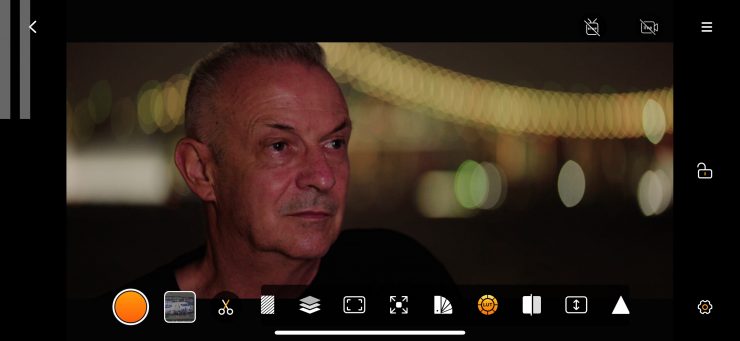
There are a few default LUTs available in the app, but only for Sony and Canon cameras. You can also load up your own LUTs if you want.
I like that you can actually record the video or take still images directly within the app. While this isn’t great quality it does allow you to view back clips and also upload something to social media if need be.
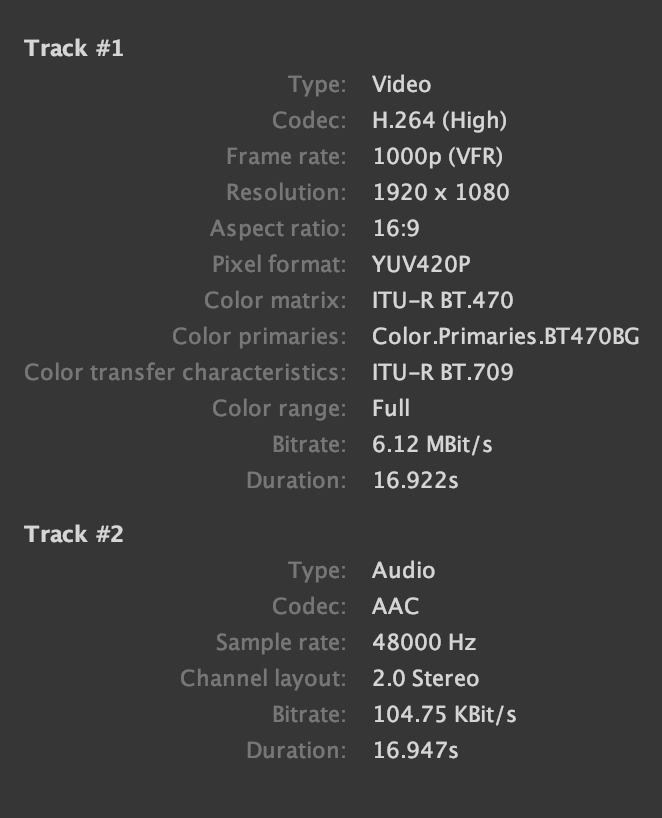
I decided to see what codec and bitrate the Hollyview app was recording. It records a 1920 x 1080 H.264 YUV 420 ITU-R BT.709 file at 6.12 MBit/s.

You can also take a screenshot at any time by touching on the scissor icon.
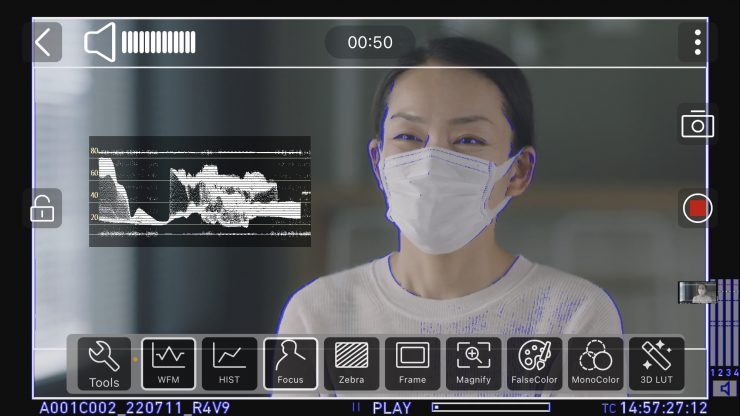
You used to be able to do the image zoom and access the monitoring tools while it was recording with the old app, but now with the new app you can’t do that anymore.
You have to set a video assist tool before you hit record if you want to use it.

In the app you can also set up RTMP live streaming by connecting to select social media channels.
Latency
Latency can be a big issue with wireless video transmission systems that send compressed images. I wanted to test the latency of the PYRO 7 when using it as an RX unit when a PYRO S TX unit was being fed a signal over SDI and HDMI.
HDMI
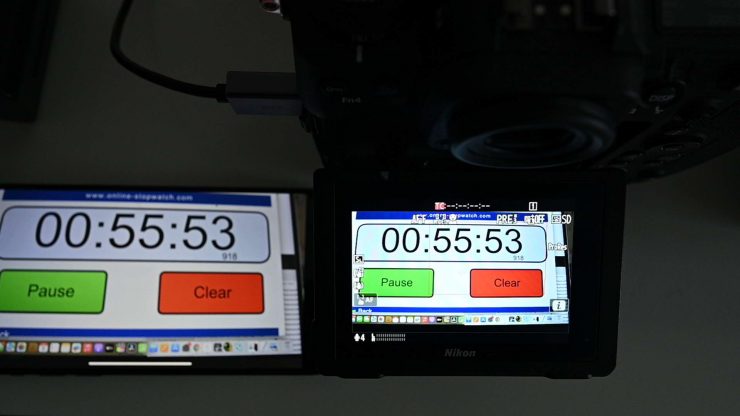
I tested out the PYRO 7 to see how much latency there was when using it in conjunction with the PYRO S TX plugged directly into the HDMI output of the Nikon Z9 and the HollyView app.
From my tests, I found that the average latency between the PYRO S TX unit and the PYRO 7 (set as an RX unit) when inputting a signal via HDMI was a whopping 223ms. Now, companies will only quote the latency between the TX and RX units, and while it is fine to do this, that isn’t real-world latency. The latency between a TX and an RX instead of looking at latency in a whole image chain is like quoting flywheel horsepower and not horsepower at the wheels of a car. Anyone operating a camera needs to view an image on a monitor or EVF, so if someone is pulling focus using a wireless system, you need to factor in the whole latency throughout the image chain.
How does this latency compare to other similar systems that I have tested under the exact same conditions? Below you can see:
| LATENCY (TX to RX) | |
| Hollyland PYRO 7 | 223ms |
| Hollyland MARS M1 | 232ms |
| Vaxis Atom A5 | 171ms |
| Shimbol ZO600M | 147ms |
| Vaxis A5H | 119ms |
| CVW Swift Z | 141ms |
I then tested the latency between what is being seen on the camera’s monitor and what is being seen on the HollyView App. I found that the average latency of a series of three random tests was 98.66ms.
What do these figures actually mean? Well, anything below 100ms is considered to be low, because most humans don’t perceive a delay that small. Once you get over 100ms we perceive a noticeable delay.
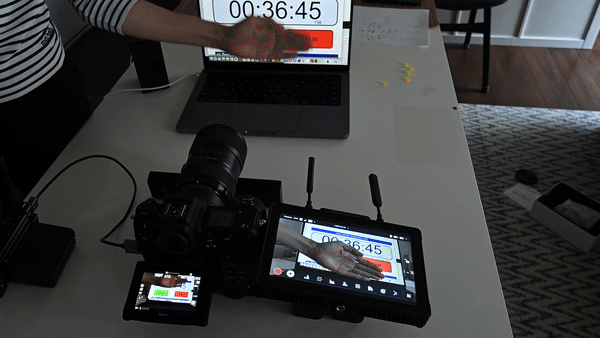
Above you can see a real-world latency test showing the difference between what is being shown on the camera’s screen (Nikon Z9), and the PYRO 7.
SDI
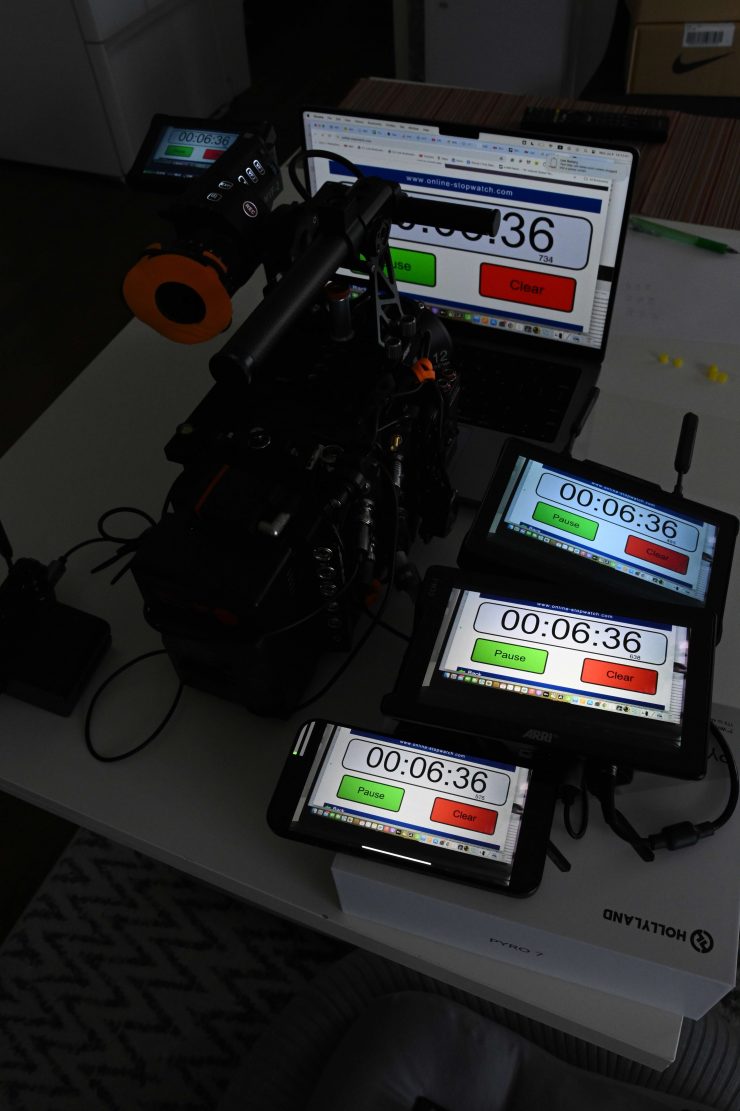
I also tested the latency when feeding an HD signal from an ARRI ALEXA 35 in a PYRO S TX and then checked the latency on the PYRO 7 and the HollyView app.
The latency I am calculating is based on the difference between a monitor connected to the camera and what it being displayed on the PYRO 7.
From my tests, I found that the average latency between the PYRO S TX unit and the PYRO 7 (set as a RX unit) when inputting a signal via SDI was 140ms. This was a little high, but it was a lot better than when using HDMI.
I then tested the latency between what is being seen on the camera’s monitor and what is being seen on the HollyView App and I found that the average latency of a series of three random tests was 74.66ms. This was a much more acceptable figure.
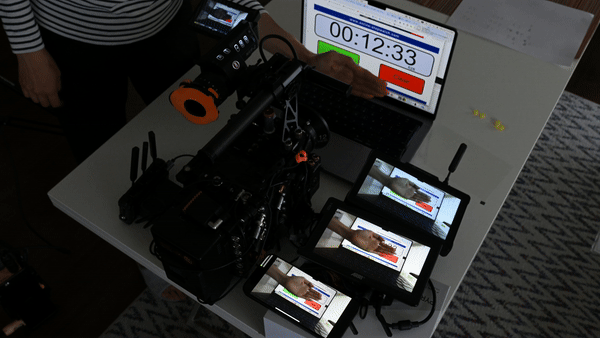
Above you can see a real-world latency test showing the difference between what is being shown on a monitor connected directly to the camera (middle), the Hollyview App (bottom), and the PYRO 7 (top) receiving a signal from the PYRO S.
Look, could you pull focus when sending a signal over SDI from the PYRO S and using the PYRO 7 as a monitor? Maybe, but it really depends on what you are doing. If you want zero (or as close to zero as possible) then you need to be a system that can send uncompressed images.
Thoughts on latency
The latency is pretty much in line with what I would personally expect from a wireless system that sends compressed video over the 5.1-5.8GHz and 2.412-2.484GHz frequencies. The latency performance when using SDI was certainly a lot better than when using HDMI. When viewing on the Hollyview app, the latency is better than when viewing on the PYRO 7.
As I previously mentioned, often companies quote theoretical latency between the TX and RX without factoring in the image chain. At least in my opinion, the only way to calculate real-world latency is to incorporate the whole image chain. I measure the latency between what I am seeing on the camera and what I am seeing on a TX connected to a monitor (or in the case of the PYRO 7, the monitor selected as the RX). I also provide real-world tests that clearly show you the latency.
Is the screen bright enough?
As I have already mentioned, the PYRO 7 is claimed to feature a 1,200 nit daylight viewable screen.
I personally think that 1,0200 nits is borderline for what I would consider daylight viewable. I really think you need a screen with at least 2,000 nits minimum to make that claim.
I actually found that in real-world use the screen was reasonably good outdoors, but you may struggle to see it in very bright sunlight. Like most monitors, it is quite reflective and hard to see if it is viewed from a particular angle.
Just like higher resolution doesn’t always equate to a better camera, higher nits don’t always equate to a better monitor. Too often I have seen monitors that have high nits, but look horrible.
The panel is listed as 8-bit with 10-bit scopes. A lot of companies list their monitors as 10-bit even though they are really using a 10-bit (8+2 FRC) panel. FRC stands for Frame Rate Control Technology and an 8+2 FRC panel is basically a way of trying to approximate the color reproduction of a true 10-bit panel. A true 10-bit monitor can display 1024 shades of color, whereas a 10-bit (8+2 FRC) panel can only truly display 256 shades. So what a 10-bit (8+2 FRC) panel does is artificially create in-between shades of color by quickly shifting the pixels to go between certain shades of colors.
For example, you would show the main shade of one color for 75% of the time and then another one for 25% of the time. This creates an illusion for the viewer that they are actually seeing more colors than what can actually be displayed.
Is it actually 1,200 nits?
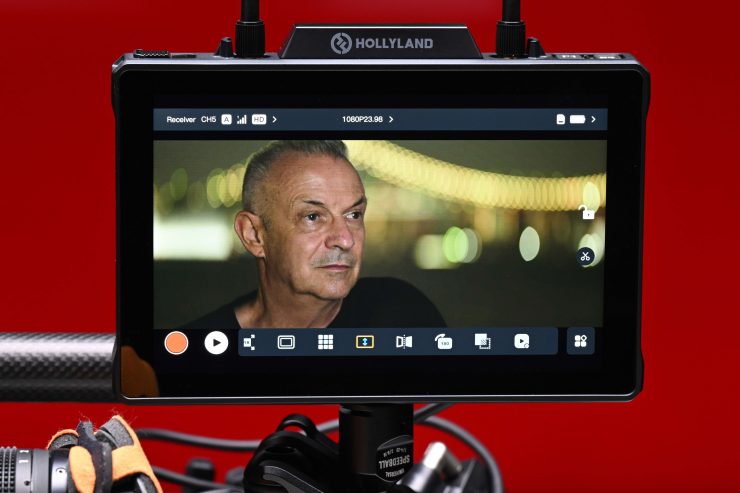
To check the claimed brightness of the PYRO 7, I shot a white card and then exposed the image so it was just below 100% so there was no clipping. I then took a reading from the PYRO 7 using a Sekonic C-800. The PYRO 7 has a claimed maximum brightness of 1,200 nits so does it produce 1,200 nits?
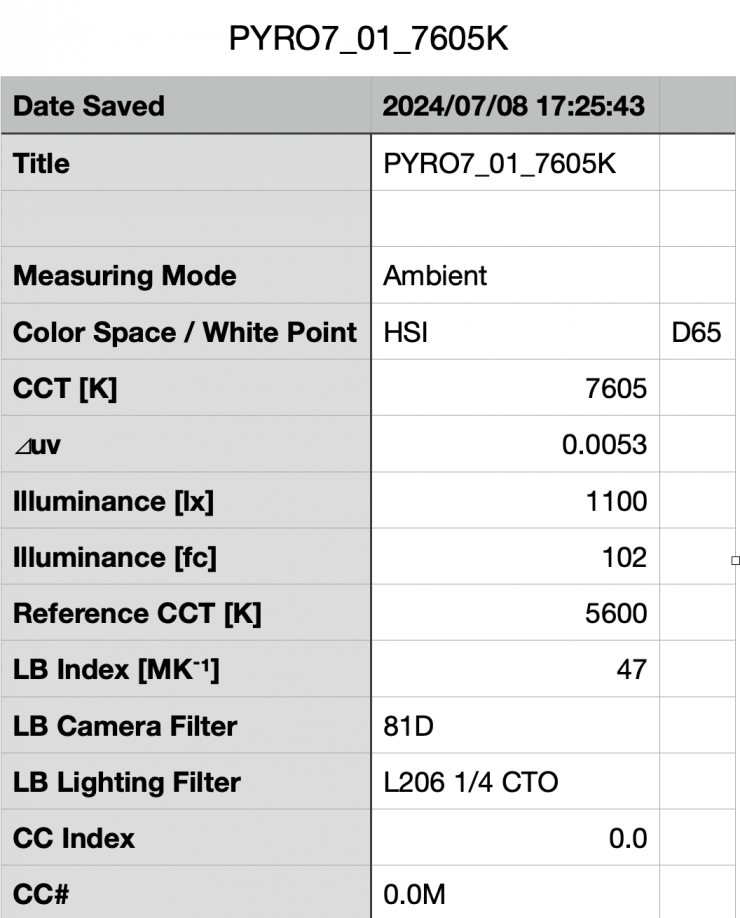
The PYRO 7 gave me a reading of 1100 lux. This was with the brightness set to 100%.
| BRIGHTNESS | |
| Holyland PYRO 7 | 1100 lx |
| Hollyland MARS M1 | 997 lx |
| Vaxis Atom A5 | 1210 lx |
| Shimbol ZO600M | 1000 lx |
| Vaxis A5H | 796 lx |
| CVW Swift Z | 259 lx |
Above you can see what the brightness was for competing products I have tested.
As another comparison, I measured the Atomos Ninja V at the exact same time and I got a reading of 960 lx.
Image quality
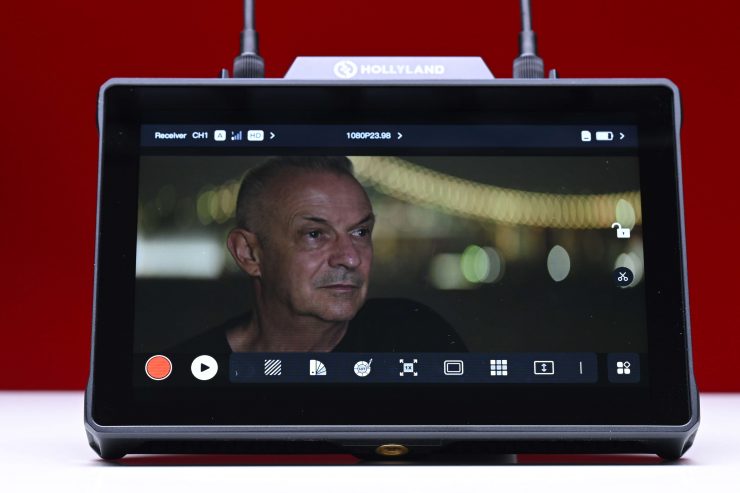
At the end of the day if a monitor can’t display accurate images then it doesn’t matter how many bells and whistles it has.
The picture quality is reasonably good on the PYRO 7, however, I did find that it looked a little de-saturated. This was the same issue I found with the older MARS M1.
Unfortunately, there is no way of adjusting the saturation or contrast. I did find that the monitor was a little on the warm side but it doesn’t lean green or magenta.
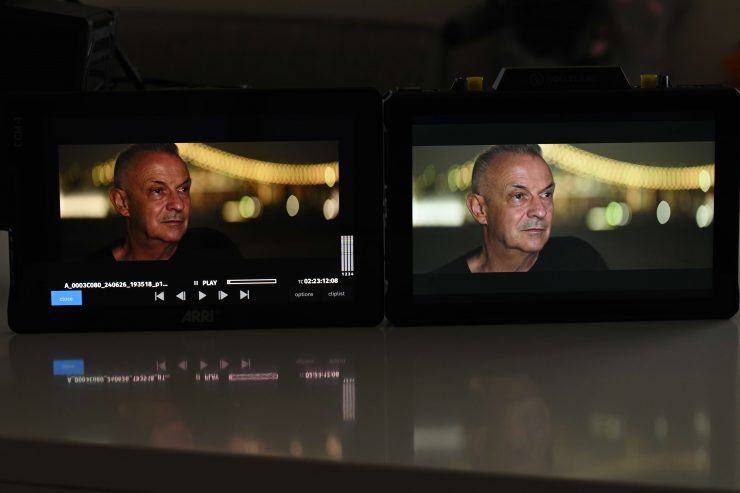
Above you can see an image comparison between the SmallHD CCM-1 which is my go-to onboard camera monitor and the Hollyland PYRO 7. The colors are drastically different. The SmallHD CCM-1 matches what my camera’s EVF is showing, while the PYRO 7 lacks saturation, has a colder image, and the blacks are elevated.
Overall, I was reasonably happy with the image I was seeing on the PYRO 7, but it didn’t match my camera’s EVF.
The trouble with trying to evaluate any monitor’s image quality is that it is very subjective. What one person may think looks good, another may think looks terrible. Personally, I want the monitor to match as closely to what I am seeing in my camera’s EVF.
Does accuracy really matter?
I have said this before and it may sound like a ridiculous question to ask, but with everyone watching content on different screens and types of screens, it’s a legitimate question.
Just because you are basing color accuracy, brightness, and contrast off whatever monitoring or grading monitor you are using there is very little chance that it is going to be seen by someone as intended unless it happens to be shown in a movie theatre (and even then there is still variables).
In the case of giving a monitor to a director, producer, or client, does it really need to be super accurate? That answer is really going to depend on the level of production. For me personally, I would rather try and provide the best image possible so that a director, producer, or client knows exactly what they are getting. I found that the image from the PYRO 7 was an ok, but not a great representation of what I was seeing on my camera.
Wireless performance
This is always a hard one to review and test. Wireless range and performance depend on where you are using it. In one location you may get 600′ of range or more, and in another, you may be lucky to get 50′. From my testing here in Japan, I found the wireless range to be fairly limited. Again, I need to stress that wireless performance very much depends on the environment you are using it.
I always test every wireless system in the exact same spot so that the variables are reduced as much as possible.
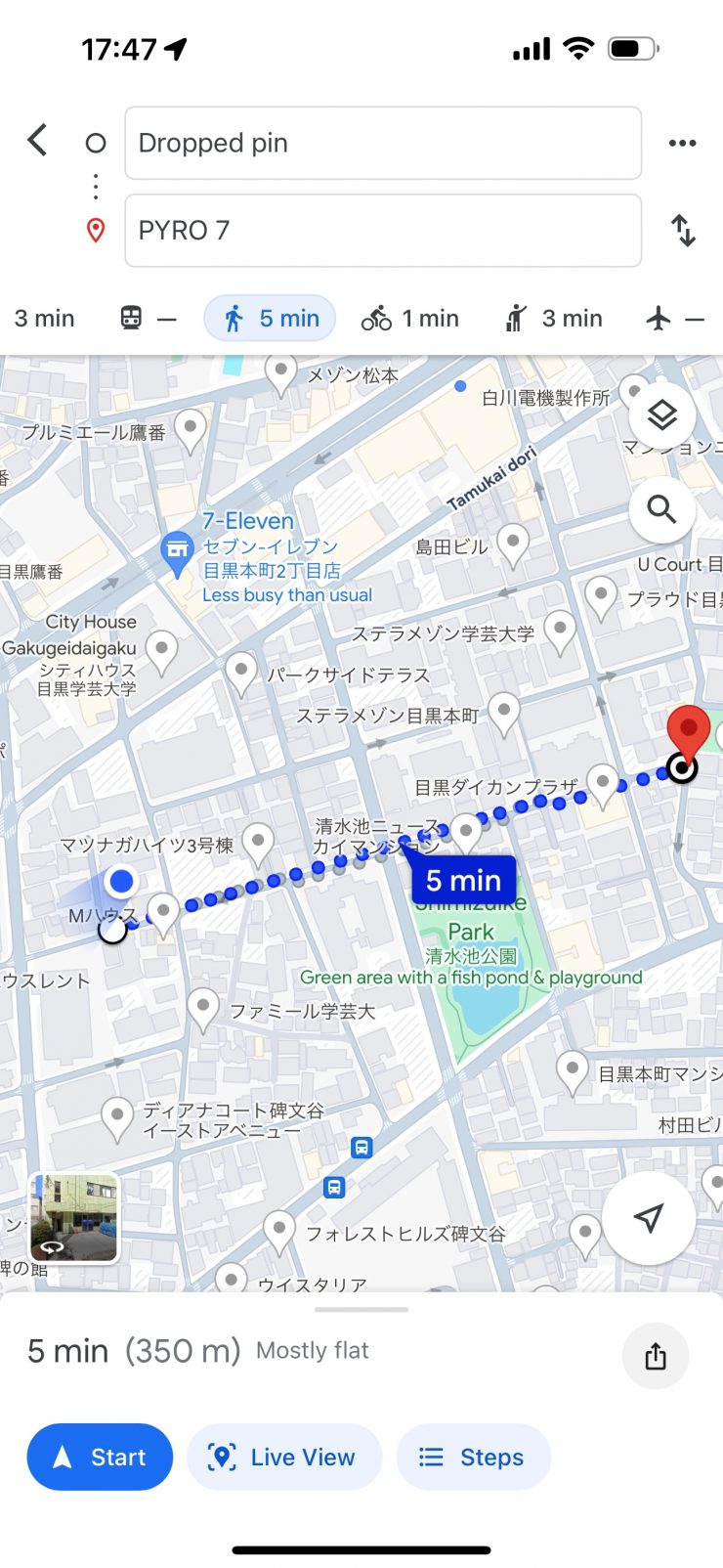
I found that I could easily get around 350m / 557′ and still get a signal. Now, that distance was better than the 300m / 1,000′ claimed operating range.
So how does this range compare to other similar systems I have tested? Below you can see:
| DISTANCE | |
| Hollyland PYRO 7 | 350m / 1,148′ |
| Hollyland MARS M1 | 170m / 557′ |
| Vaxis Atom A5 | 350m / 1,148′ |
| Shimbol ZO600M | 76.8m / 252′ |
| Vaxis A5H | 100m / 328′ |
| CVW Swift Z | 230m / 754′ |
The performance of the PYRO 7 was excellent and a lot better than the previous MARS M1. The stability of the signal was good even when cars or trucks were between the PYRO Tx and the PYRO 7. Stability is more important than the max distance, and in that regard, most of these systems are a lot closer than they may appear to be on paper when you use them in the real world.
When I was using the HollyView app, I could also get up to around 50m / 164′. I found that up to about 30-40m away it was reasonably stable, anything over that and it would constantly drop out or freeze.
So how does this range compare to other similar systems I have tested when using an app for viewing? Below you can see:
| DISTANCE | |
| Hollyland PYRO 7 | 50m / 164′ |
| Hollyland MARS M1 | 50m / 164′ |
| Vaxis Atom A5 | 350m / 1,148′ |
| Shimbol ZO600M | 85m / 279′ |
| Vaxis A5H | 30m / 98′ |
| CVW Swift Z | Not Measured |
Once the wireless signal dropped it reappeared automatically on the HollyView app once I came back into range. I didn’t need to turn anything off and then back on again.
Is it a disadvantage to having the wireless built-in?
This is a question a lot of people are bound to ask, so I’ll address it from my perspective. No, I don’t think it is a disadvantage having it built-in, and here is why. The in-built wireless doesn’t really make the PYRO 7 that much bigger than a regular 7″ monitor.
Price & Availability
The retail price for a single PYRO 7 is $549 USD. It is now available to purchase. Please note that the current price shown on B&H is not correct.
You will also be able to buy a PYRO 7 Kit (two Pyro 7s) for $899 USD, and a PYRO Video Transmission & Monitoring Kit for $899 USD.
So how does that price compare to the competition?
| PRICE | |
| Hollyland PYRO 7 | $549 USD (single monitor) |
| Hollyland MARS M1 Enhanced | $499 USD (single monitor) |
| Vaxis Atom A5 | $519 USD (single monitor) |
| Shimbol ZO600M | $369 USD (single monitor) |
| Elvid SkyVision 5.5″ Wireless RX/TX HD Recording Monitor | $519 USD (single monitor) |
| CVW Swift Z | $689.99 (for two) |
| DJI High-Bright Remote Monitor | $1,699 USD |
The Hollyland PYRO 7 is slightly more expensive when compared to some competing products, although it does have a larger screen and SDI inputs and outputs which the competition doesn’t. It is, however, a lot more affordable than the DJI High-Bright Remote Monitor.
Final Thoughts
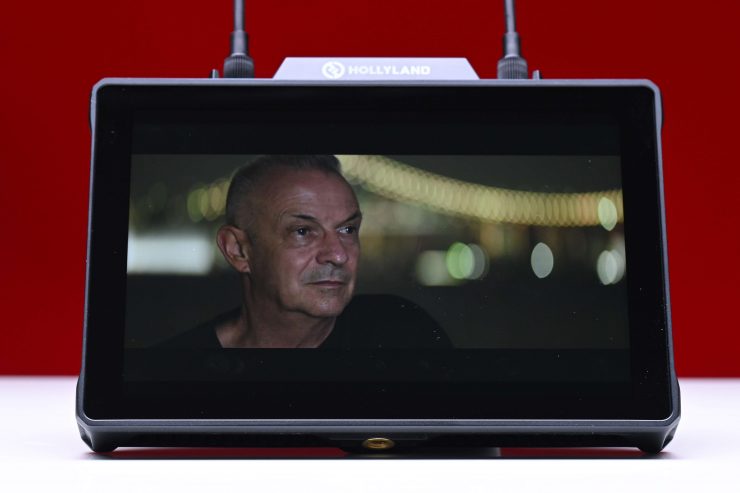
The Hollyland PYRO 7 is a well-performing, solid, and versatile wireless video monitor. Despite having some small flaws it is arguably a lot better than anything else on the market at this price. The screen quality is pretty good and the operating system is reasonably straightforward and intuitive to use. The build quality of Hollyland products continues to improve.
The range of the PYRO 7 was excellent when using a PYRO TX, although the latency could be better. These are the variables that come with compressed systems. In some areas, you might get a great range and in others, you won’t. The latency when using SDI is a lot better than when using HDMI. I found that when inputting an SDI signal into a PYRO S and sending a signal to the PYRO 7, the latency was decent enough for a lot of use-case scenarios.
Being able to use the PYRO 7 as a stand-alone monitor or as a TX or RX monitor makes it incredibly versatile. Having both SDI in and out and HDMI in and out allows it to be used with a wide array of cameras and other products.
Hollyland has done a good job with the PYRO 7 and it is a good compliment to use with their PYRO S and PYRO H wireless video transmission systems.

